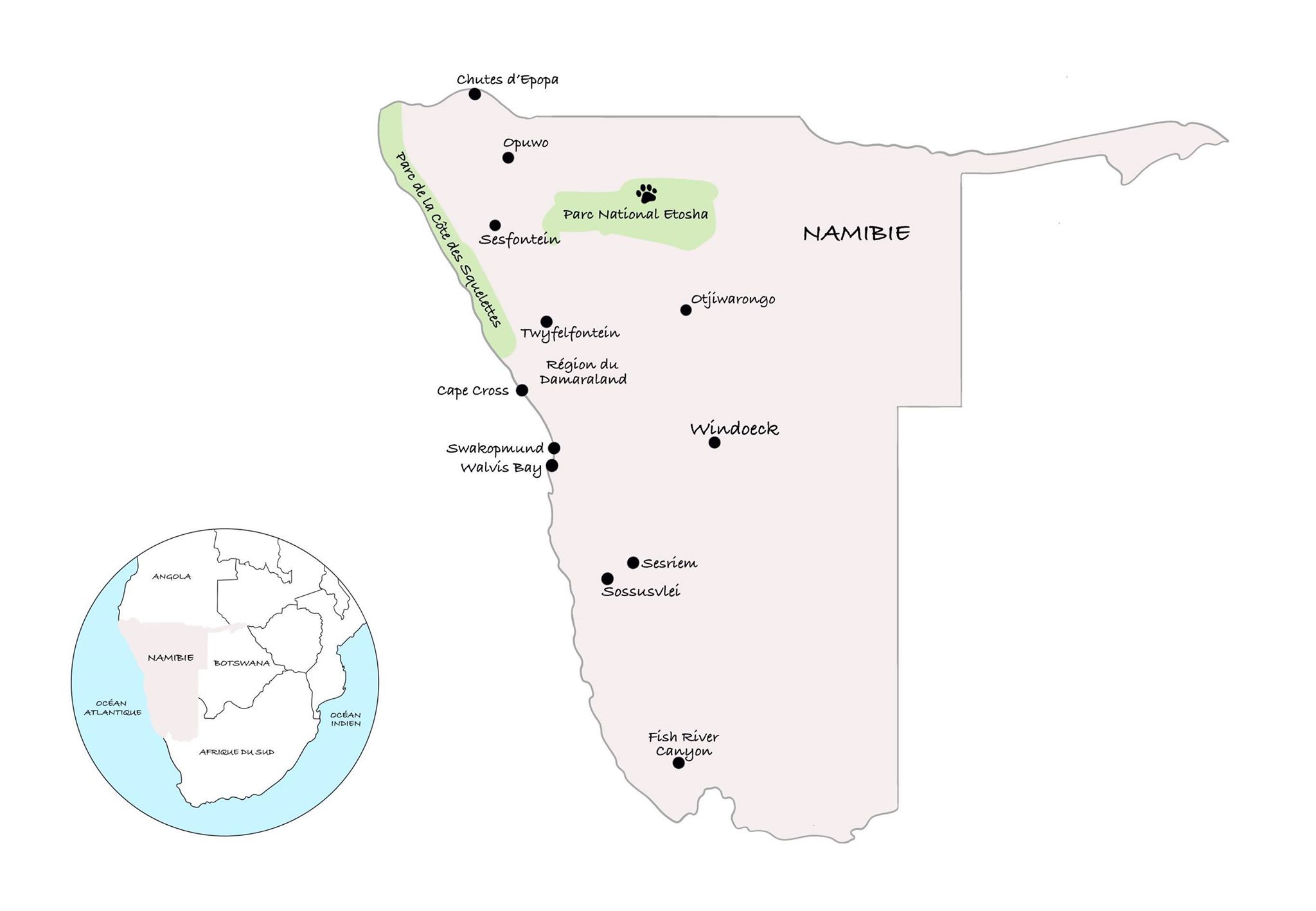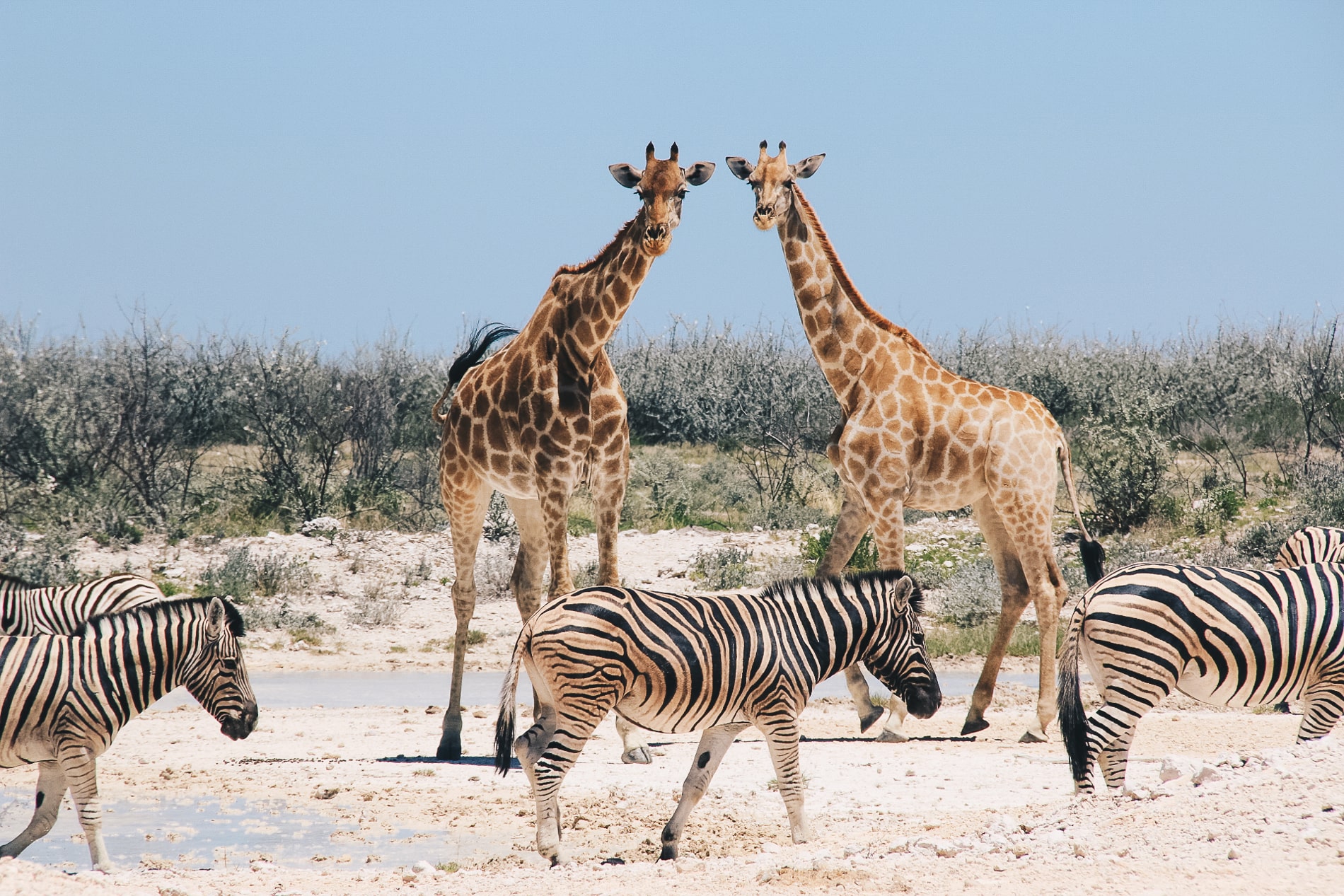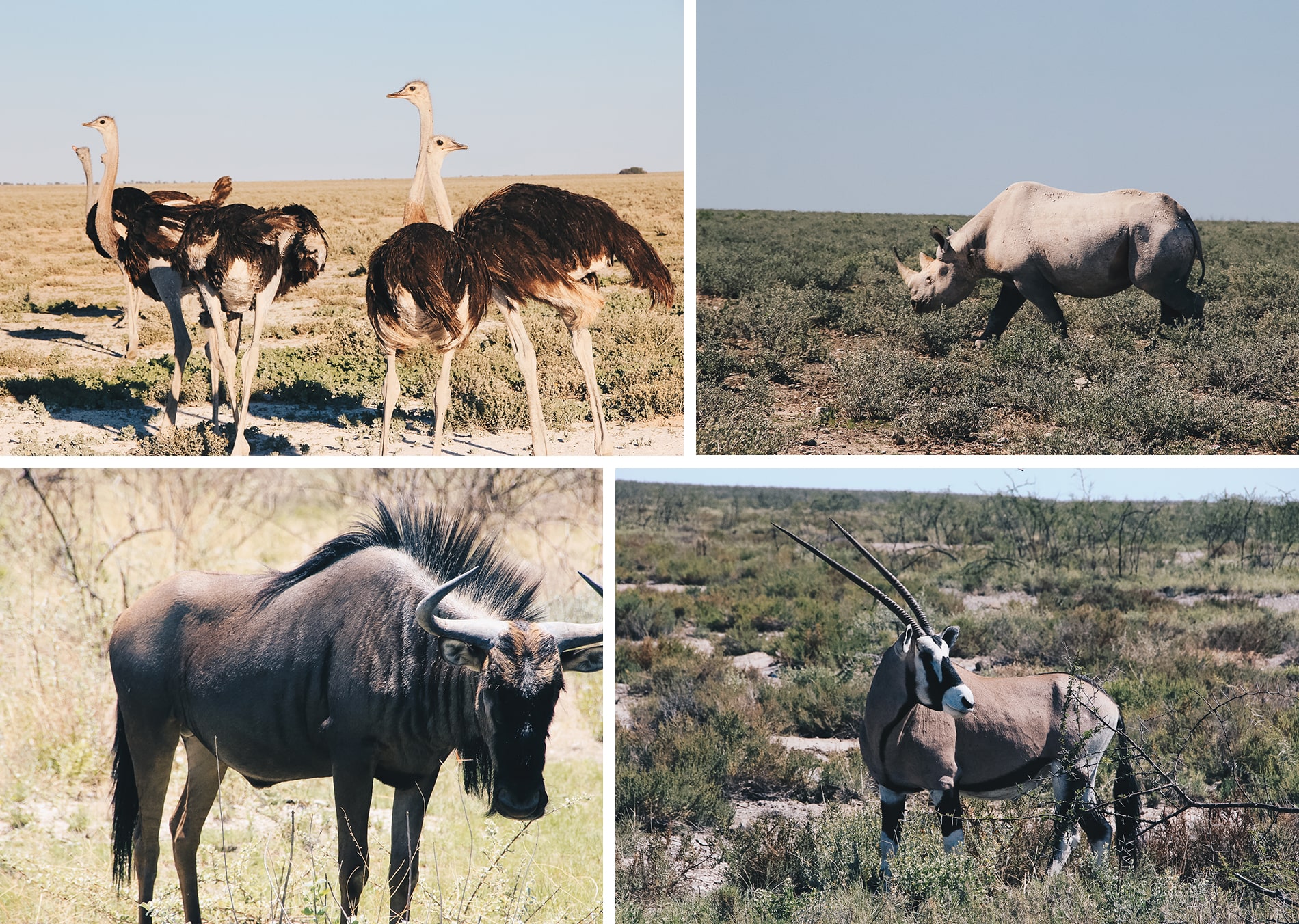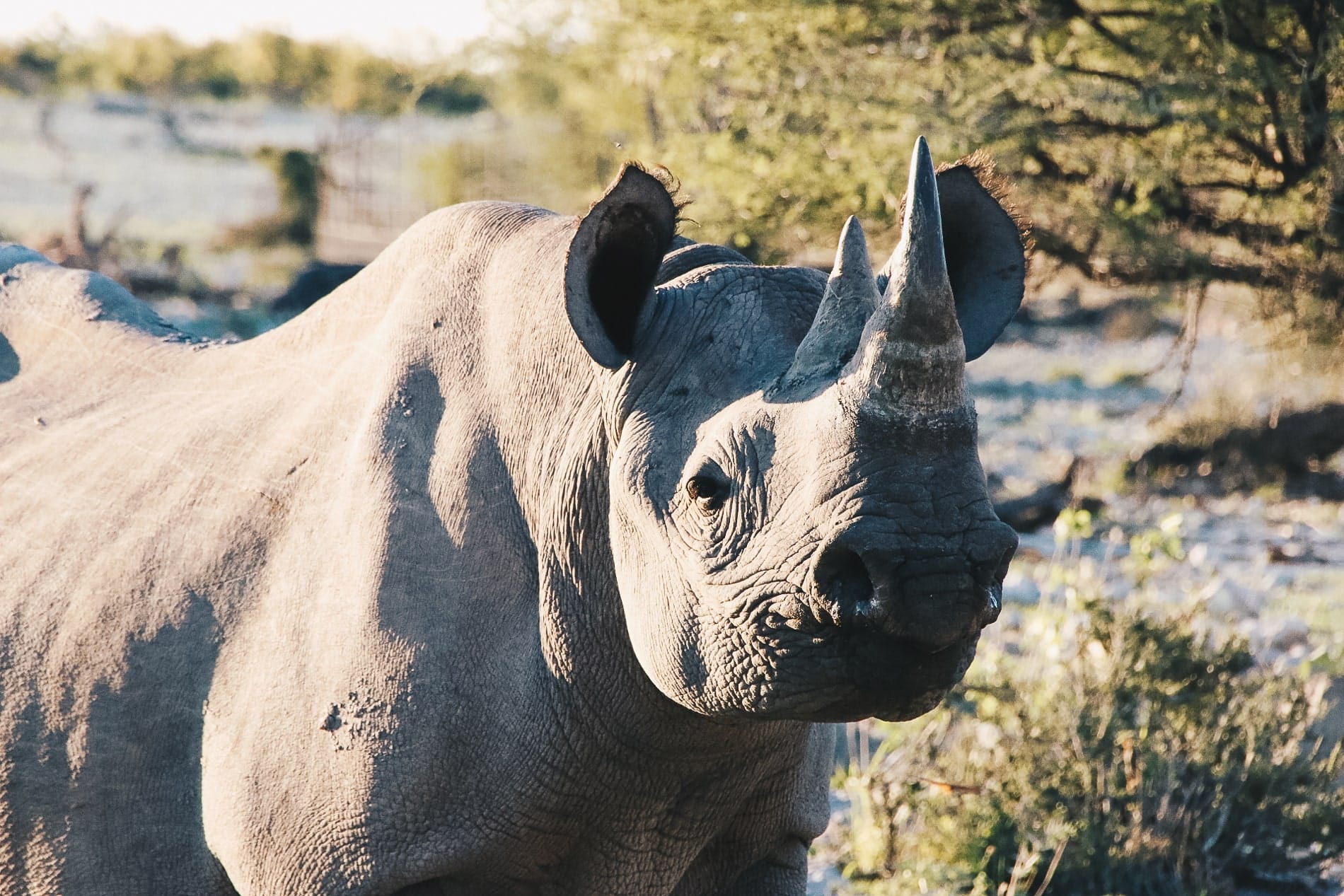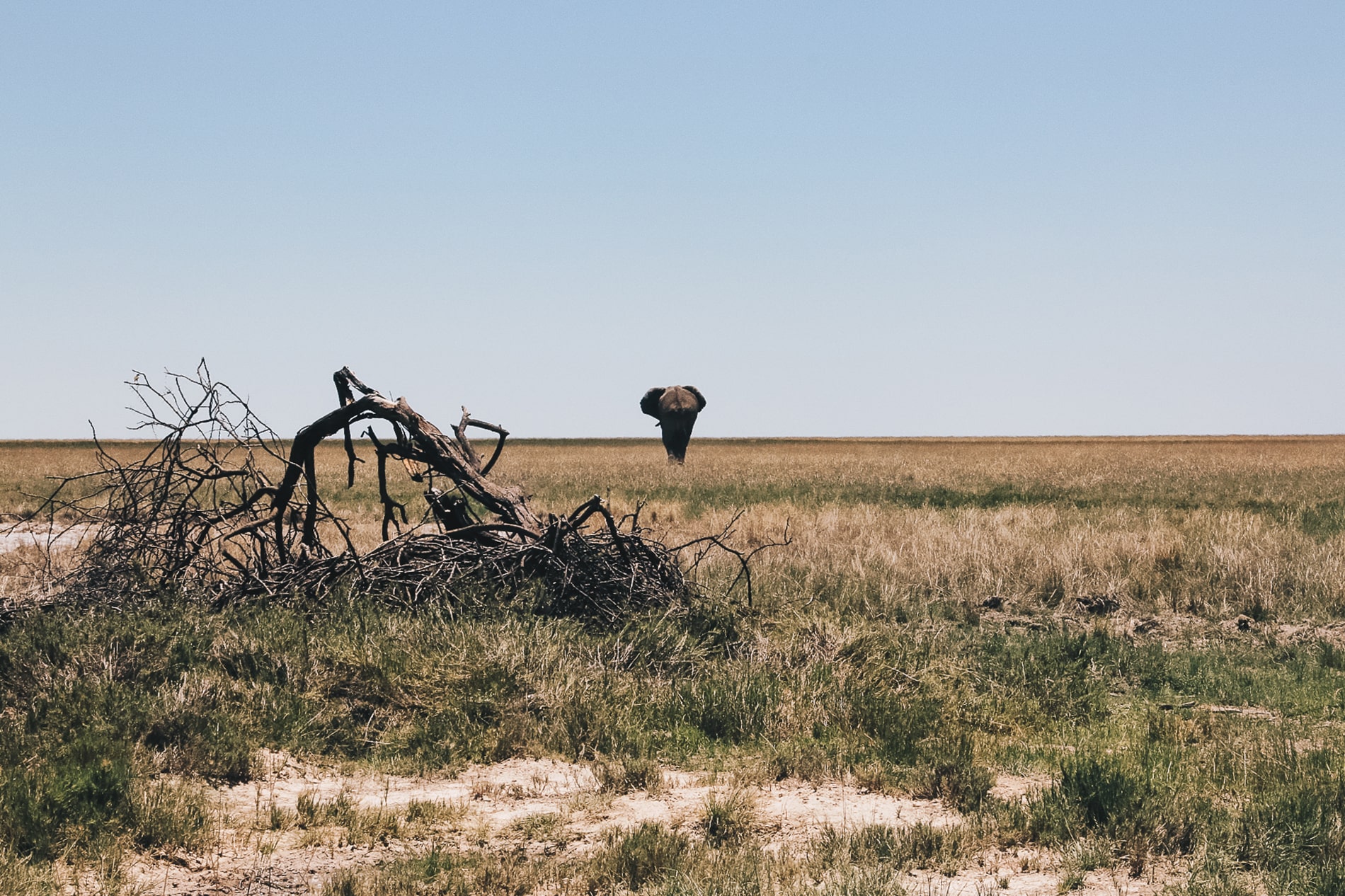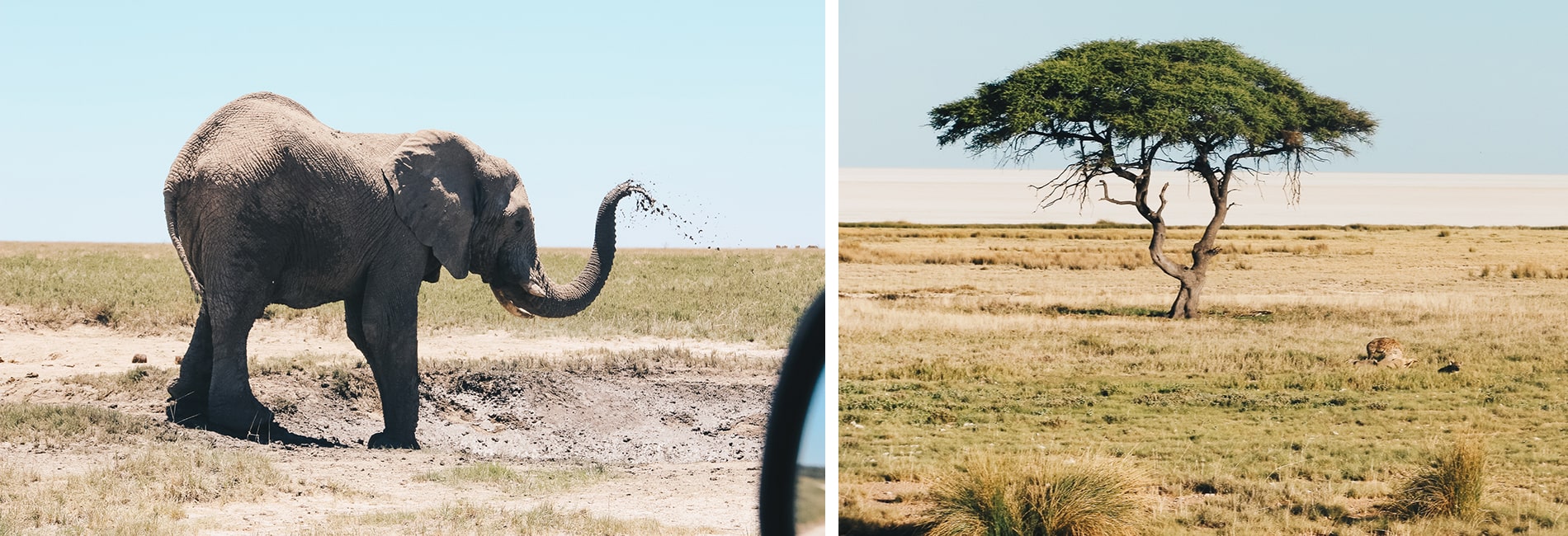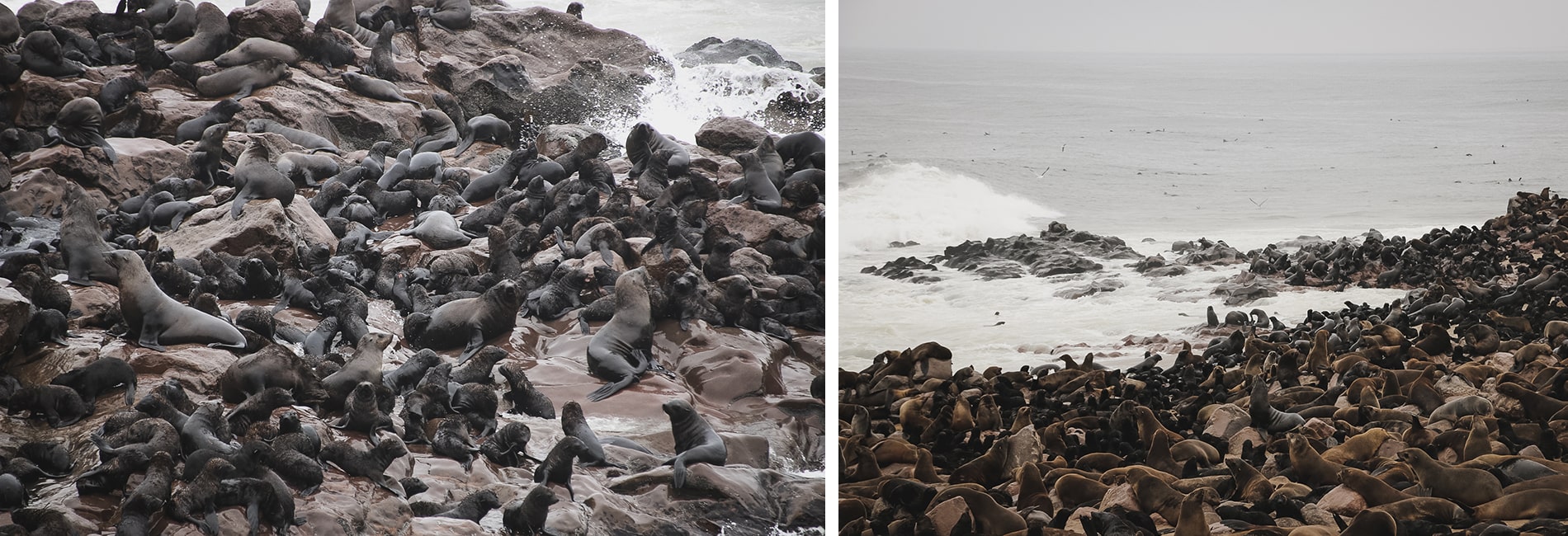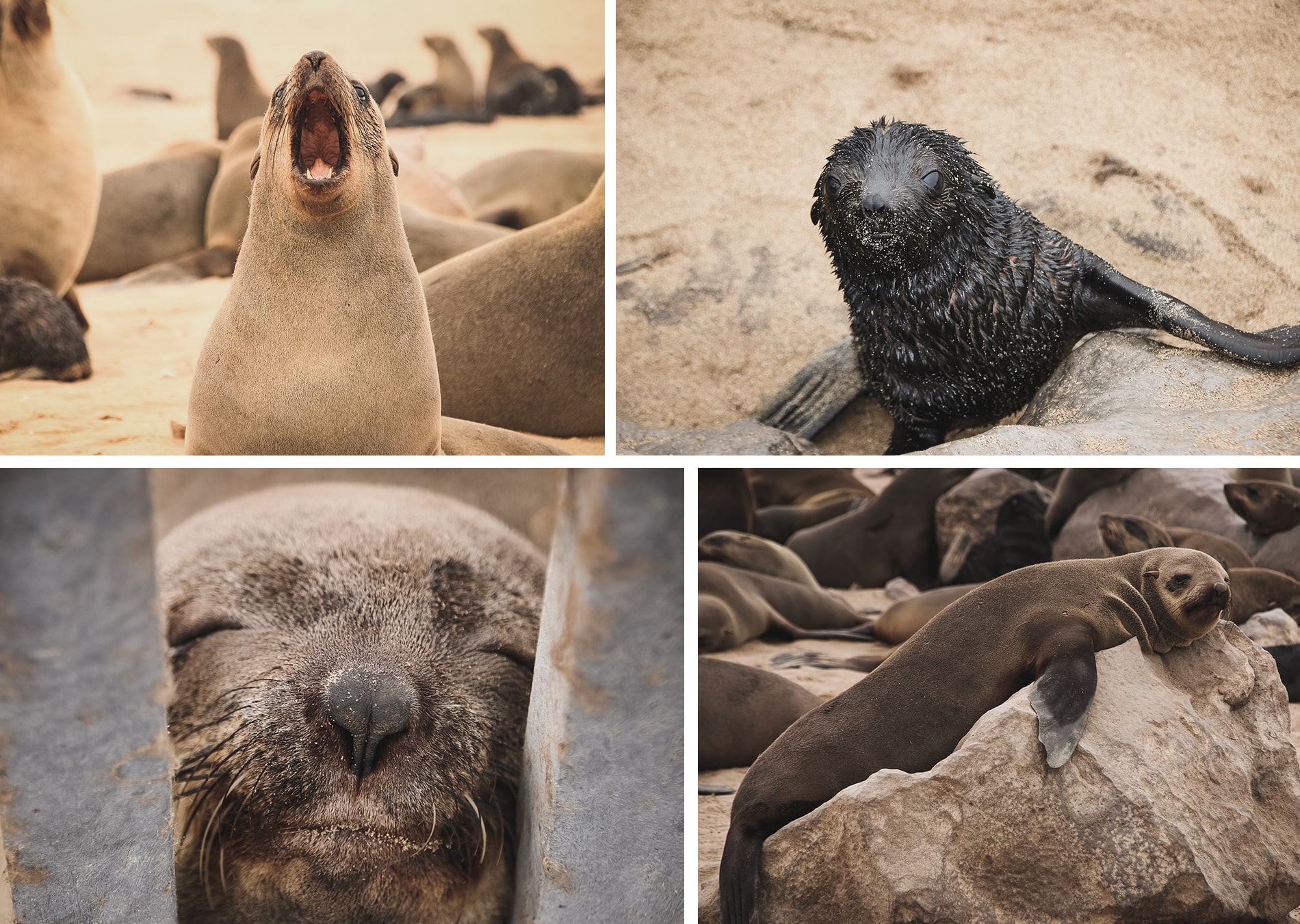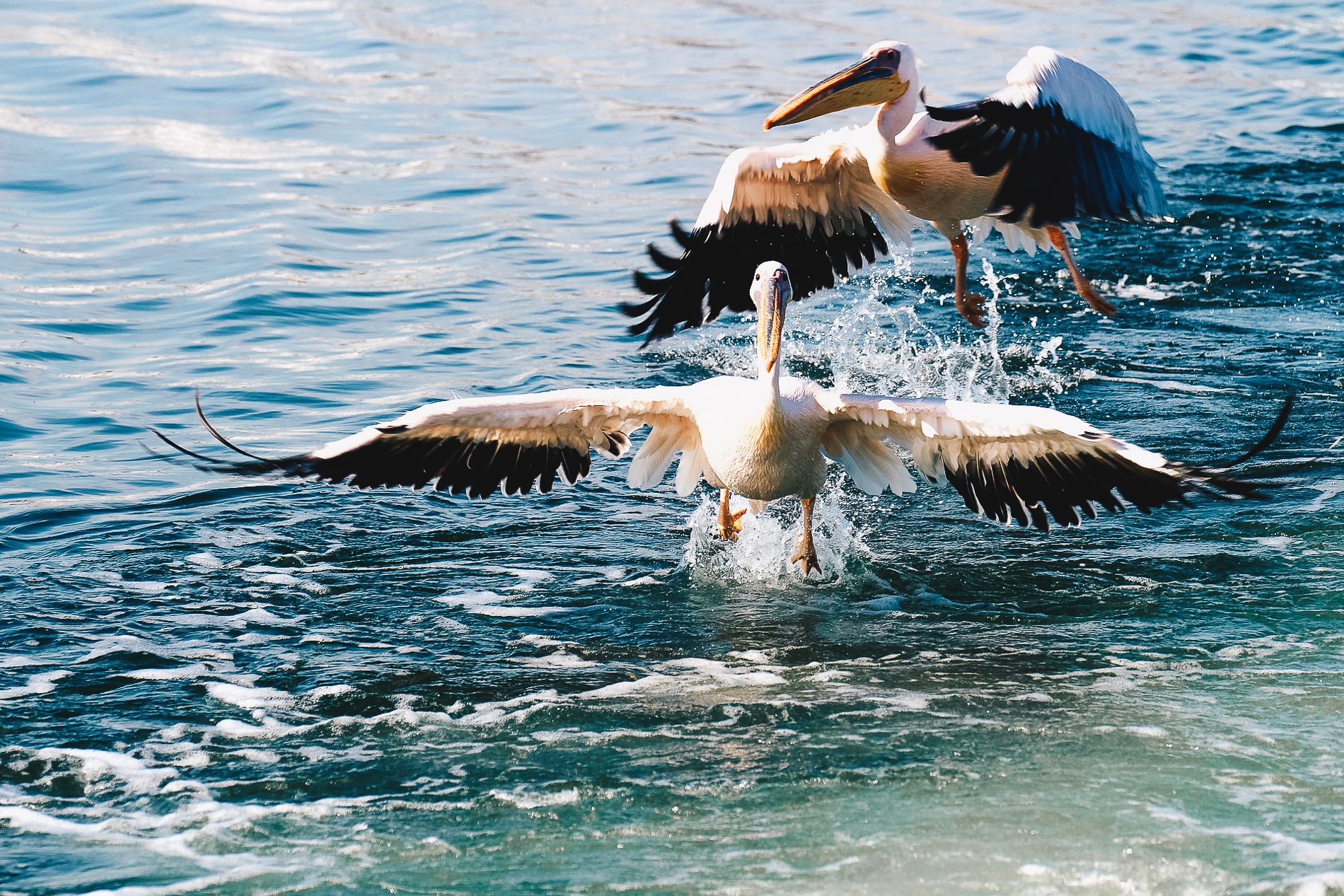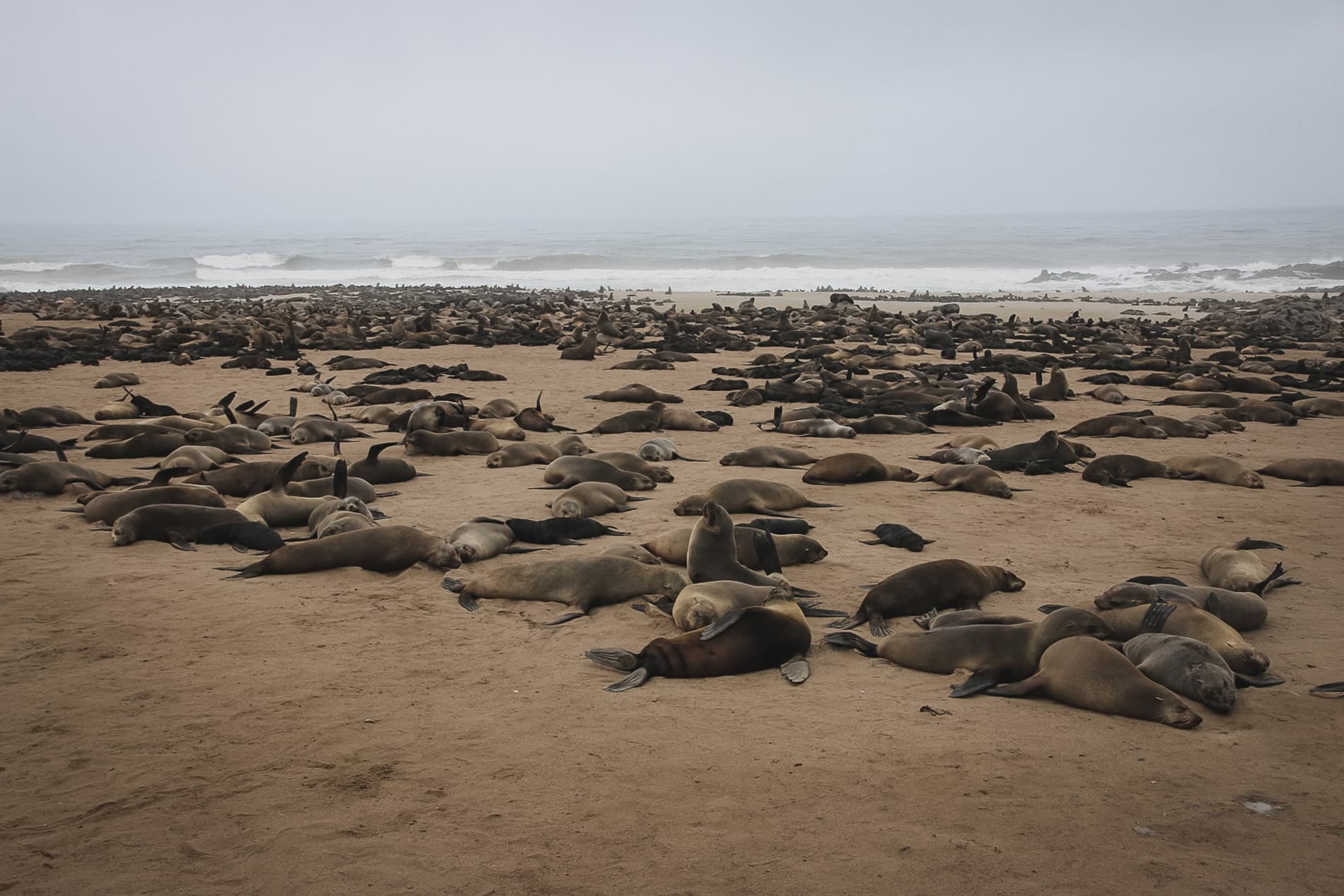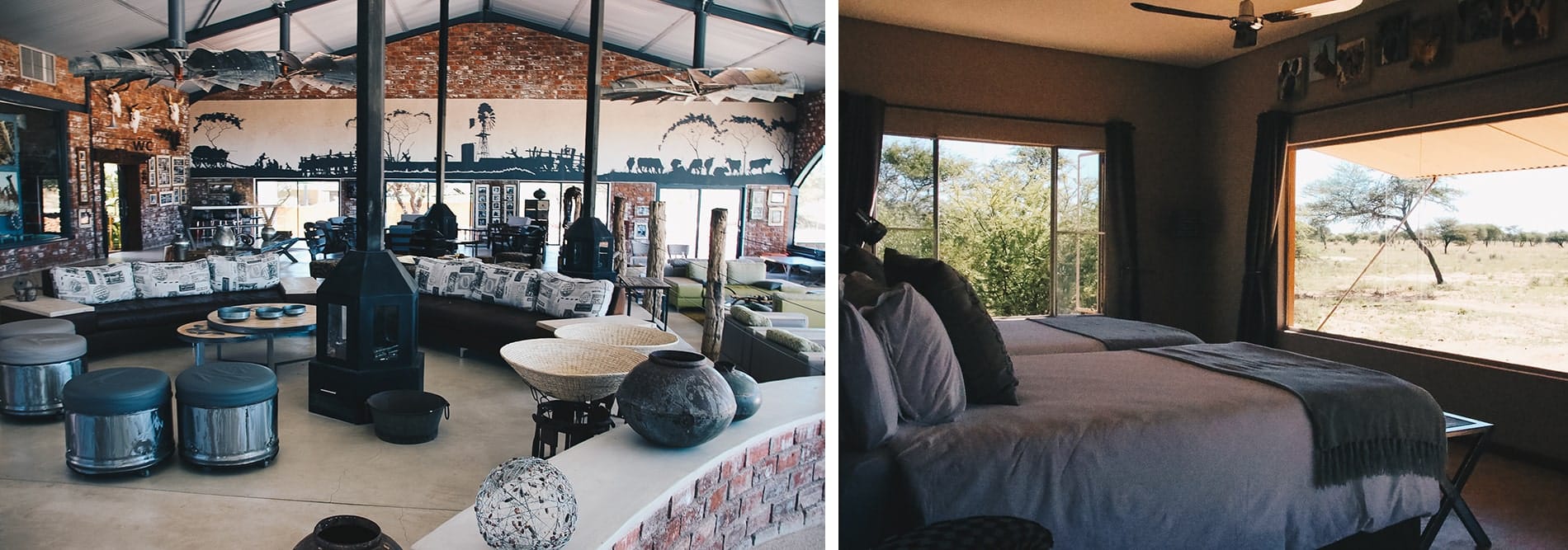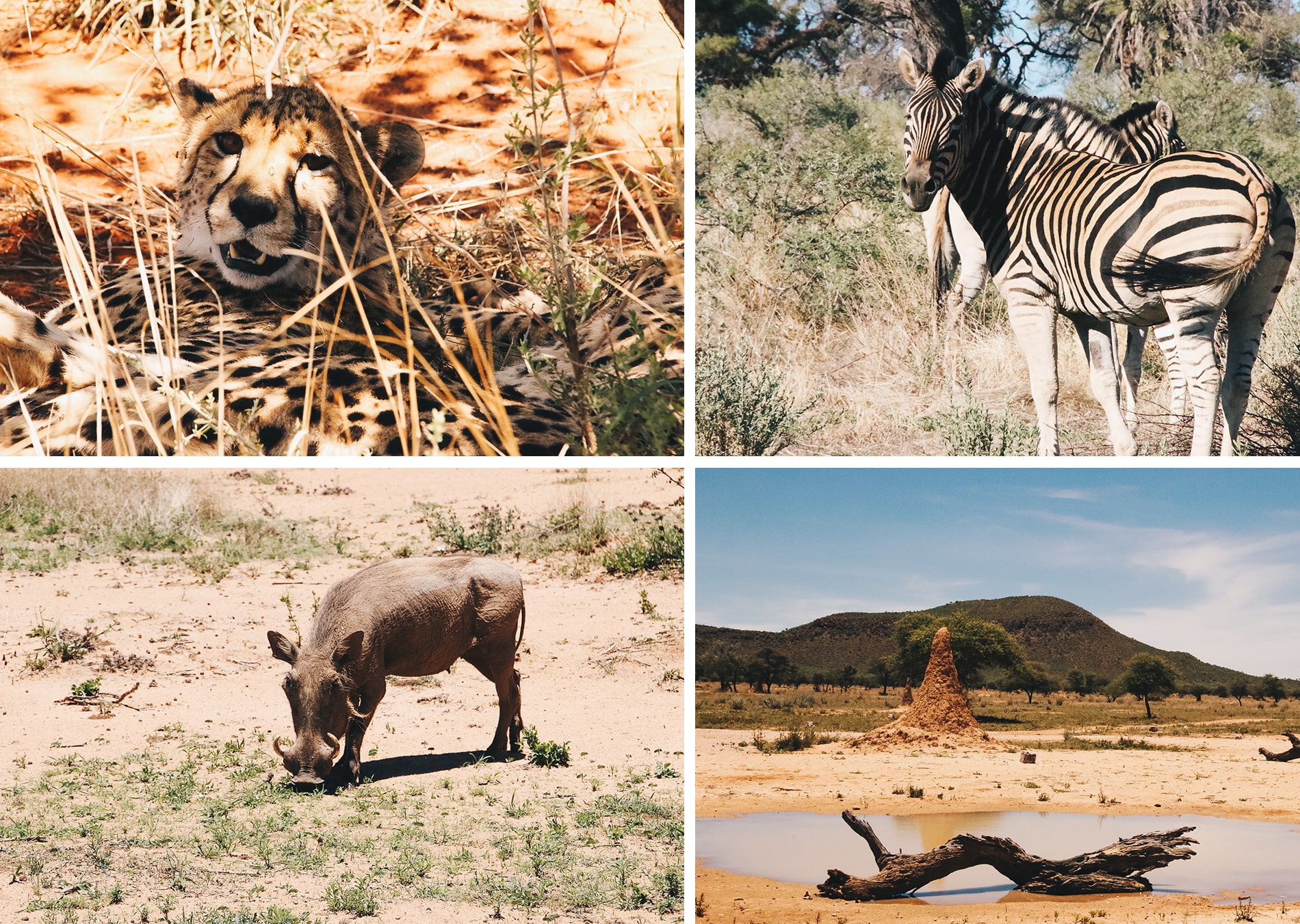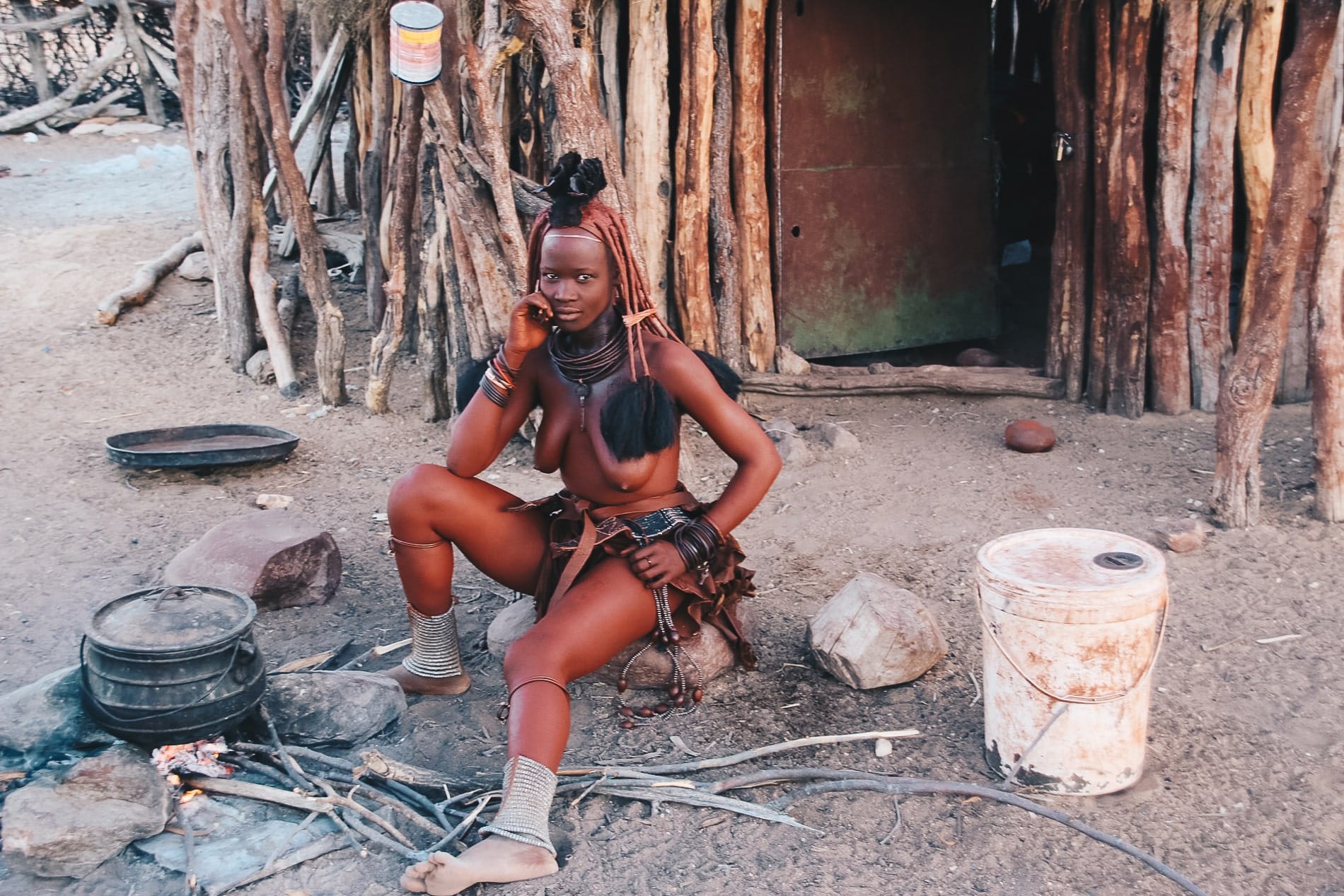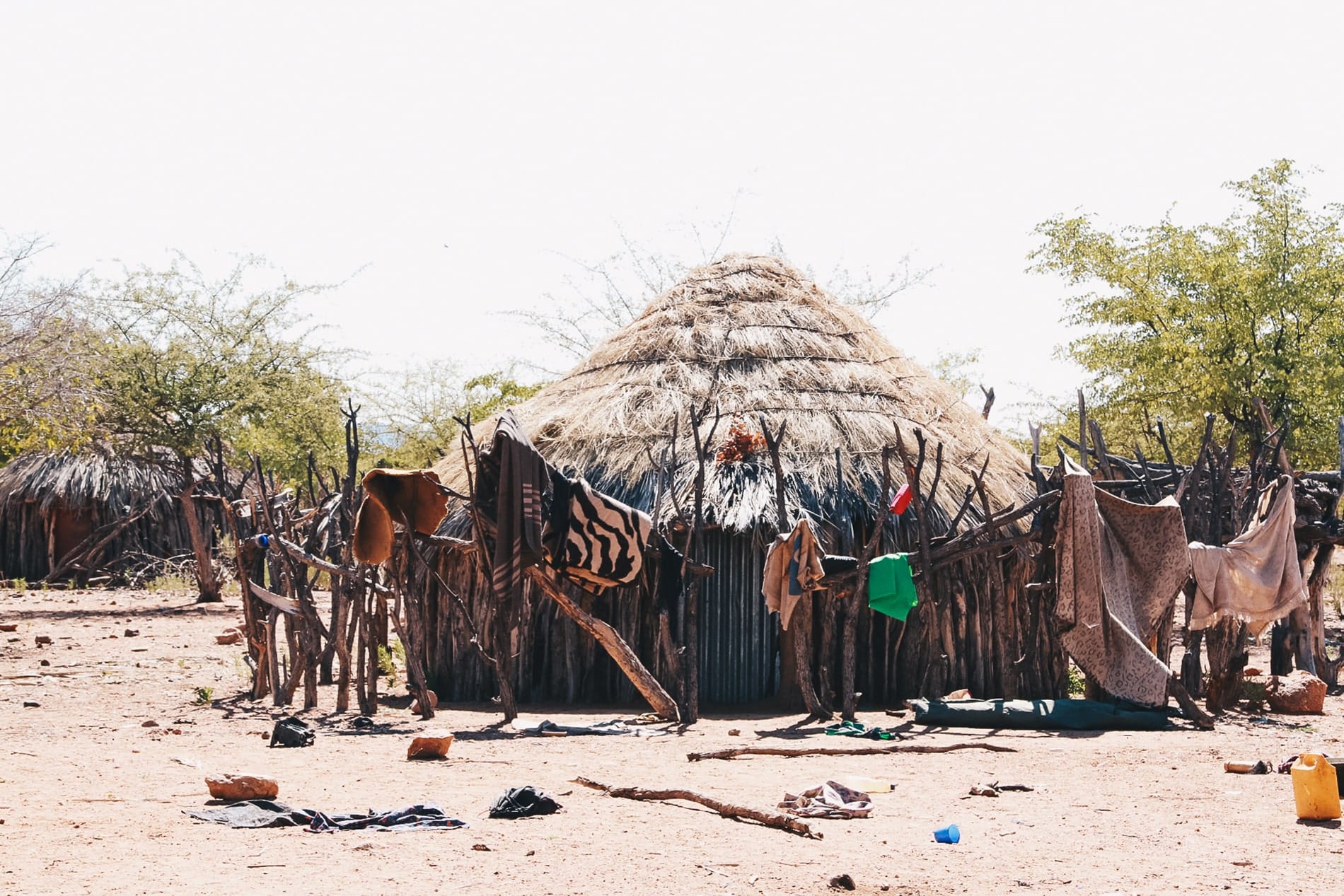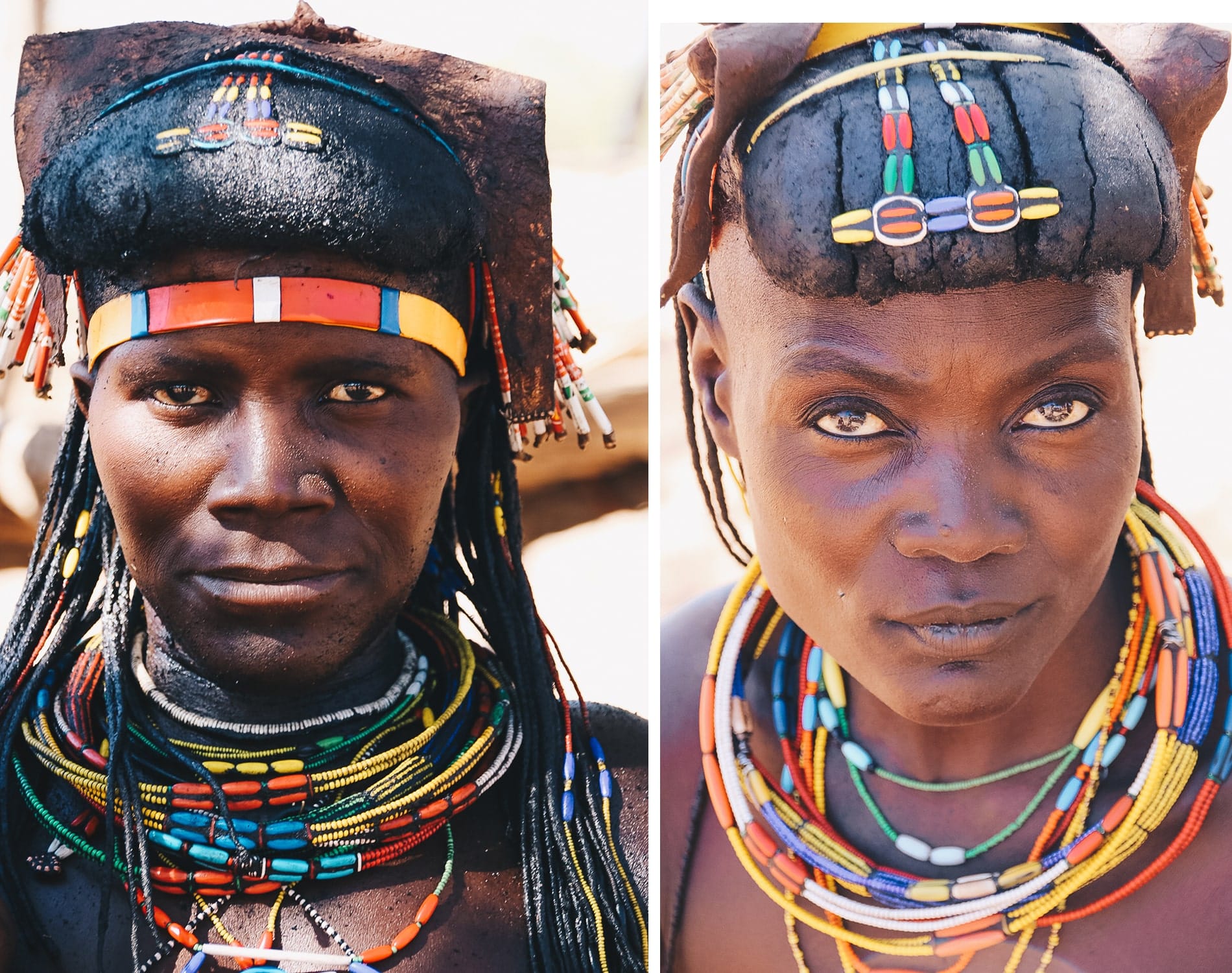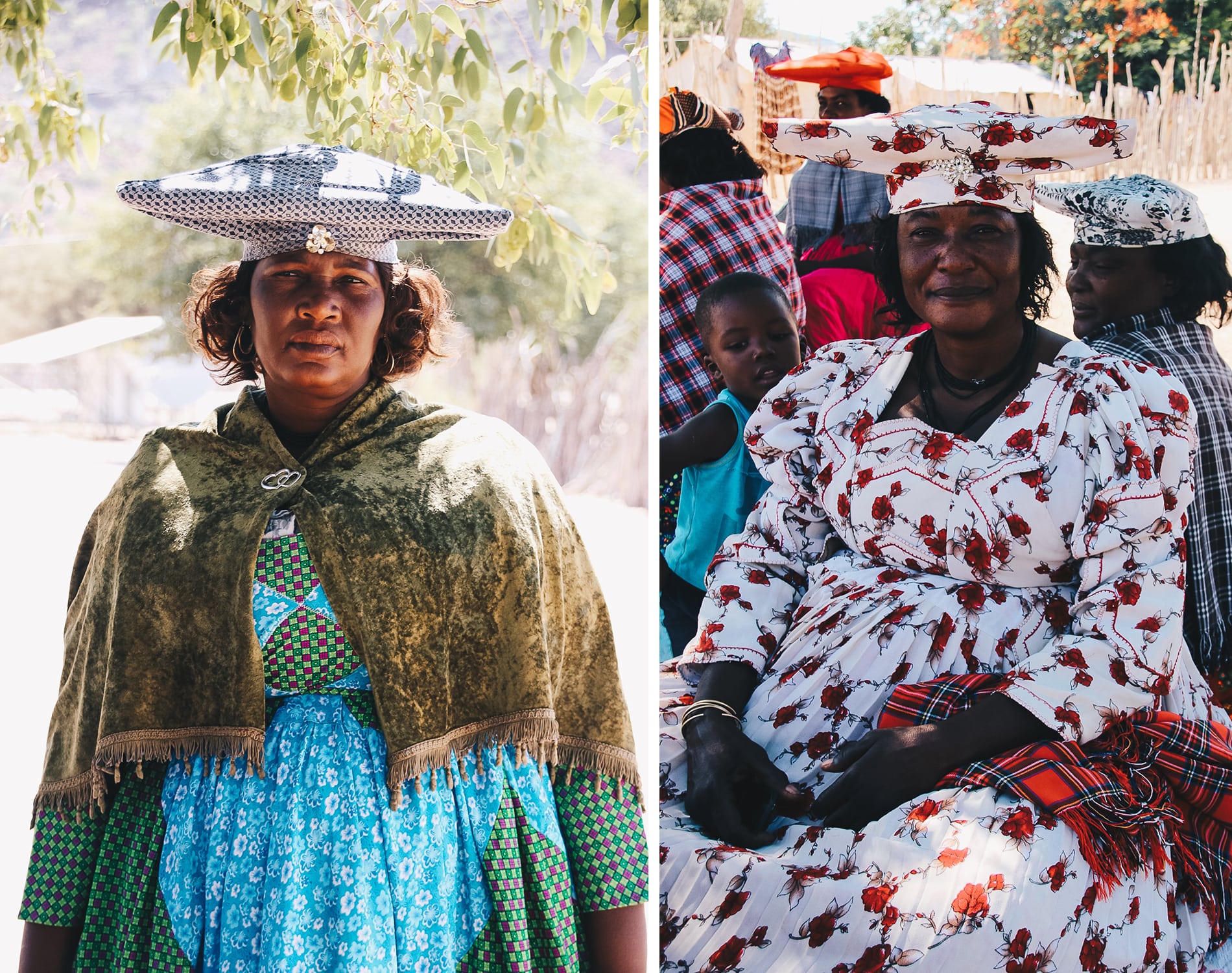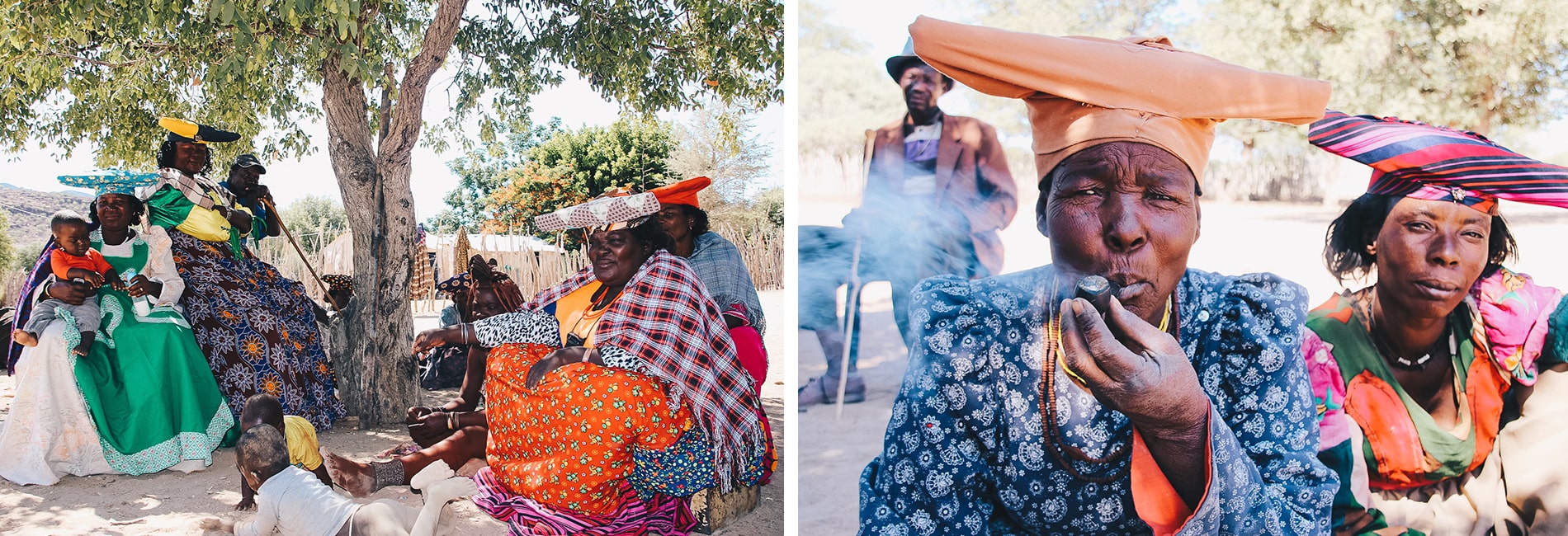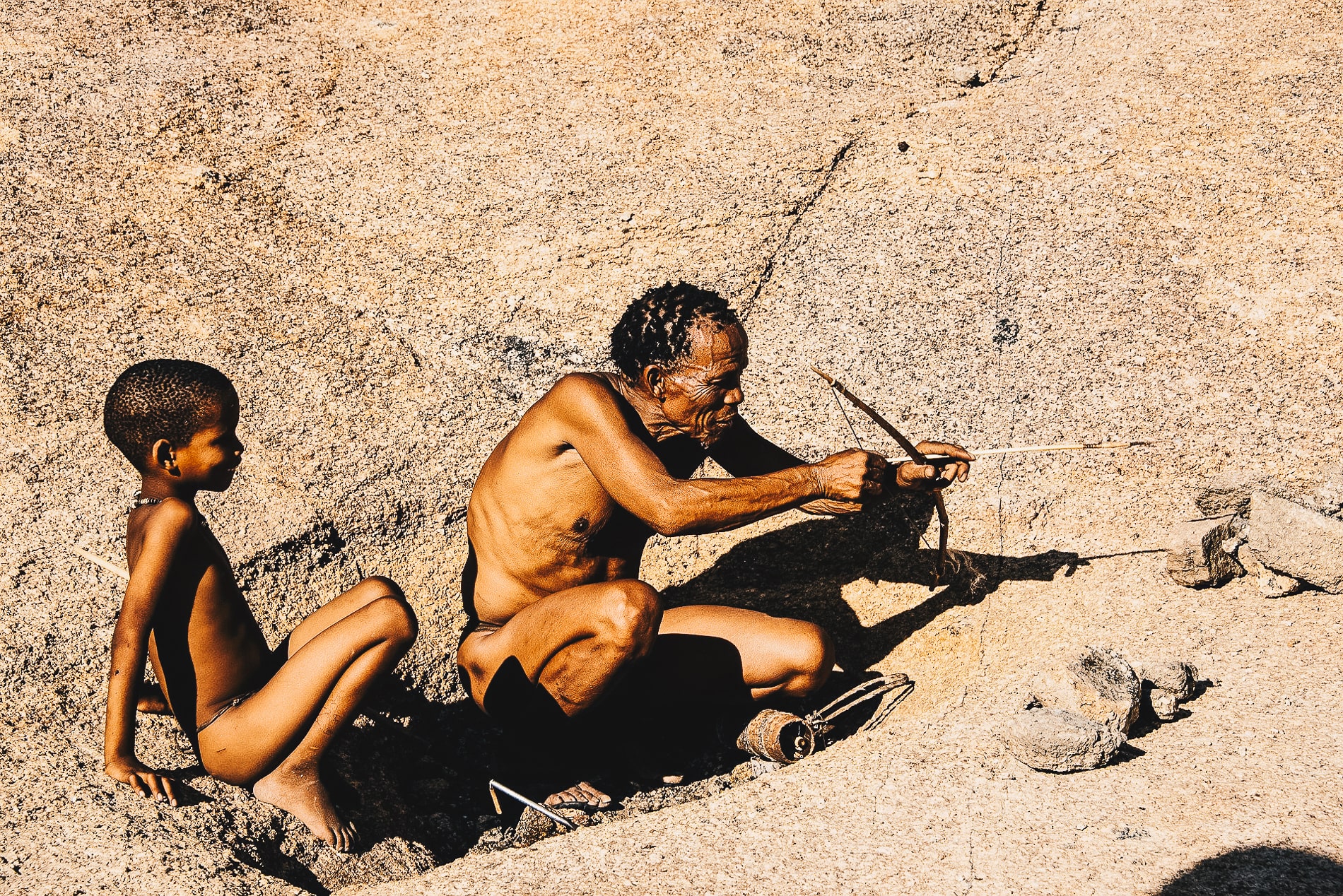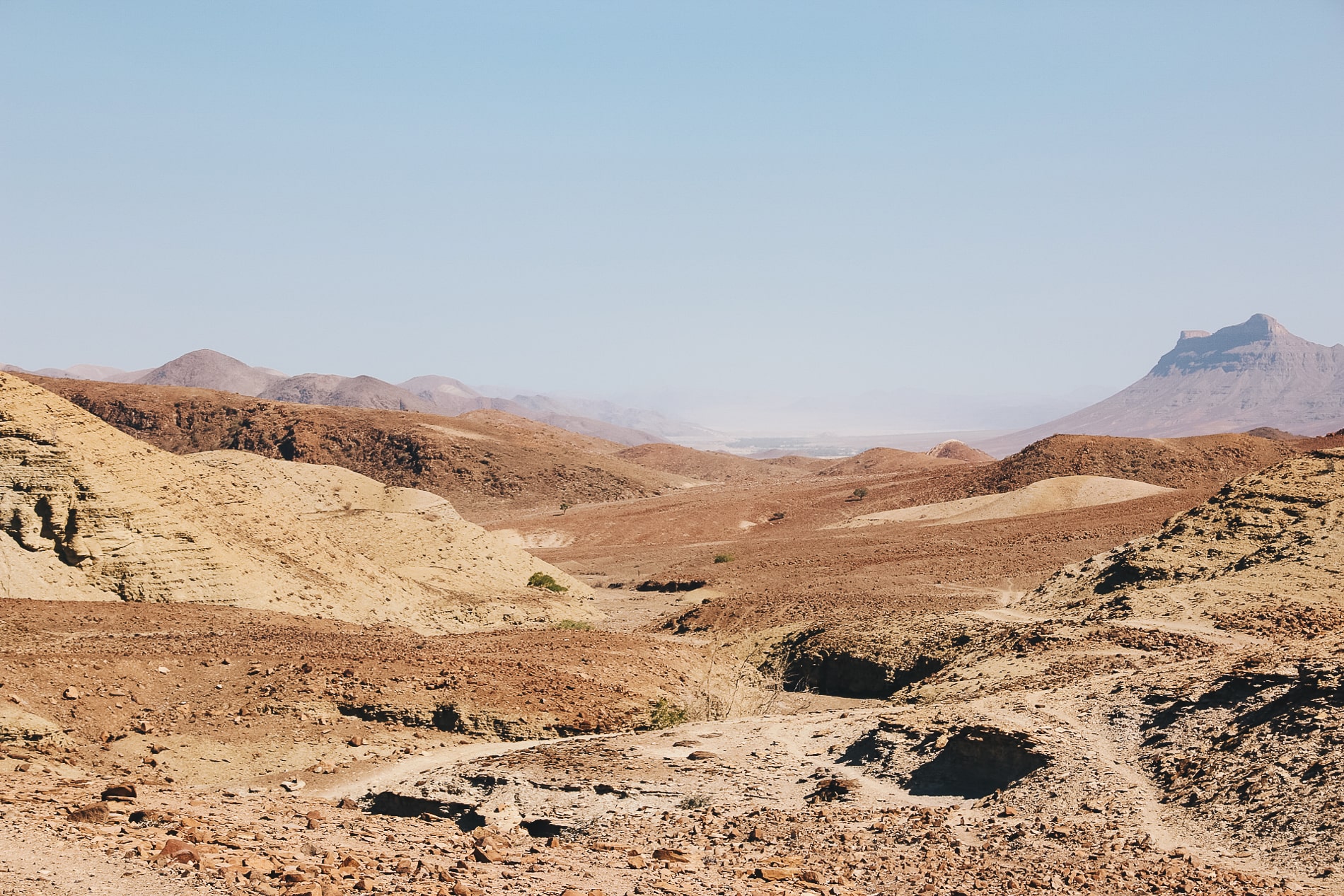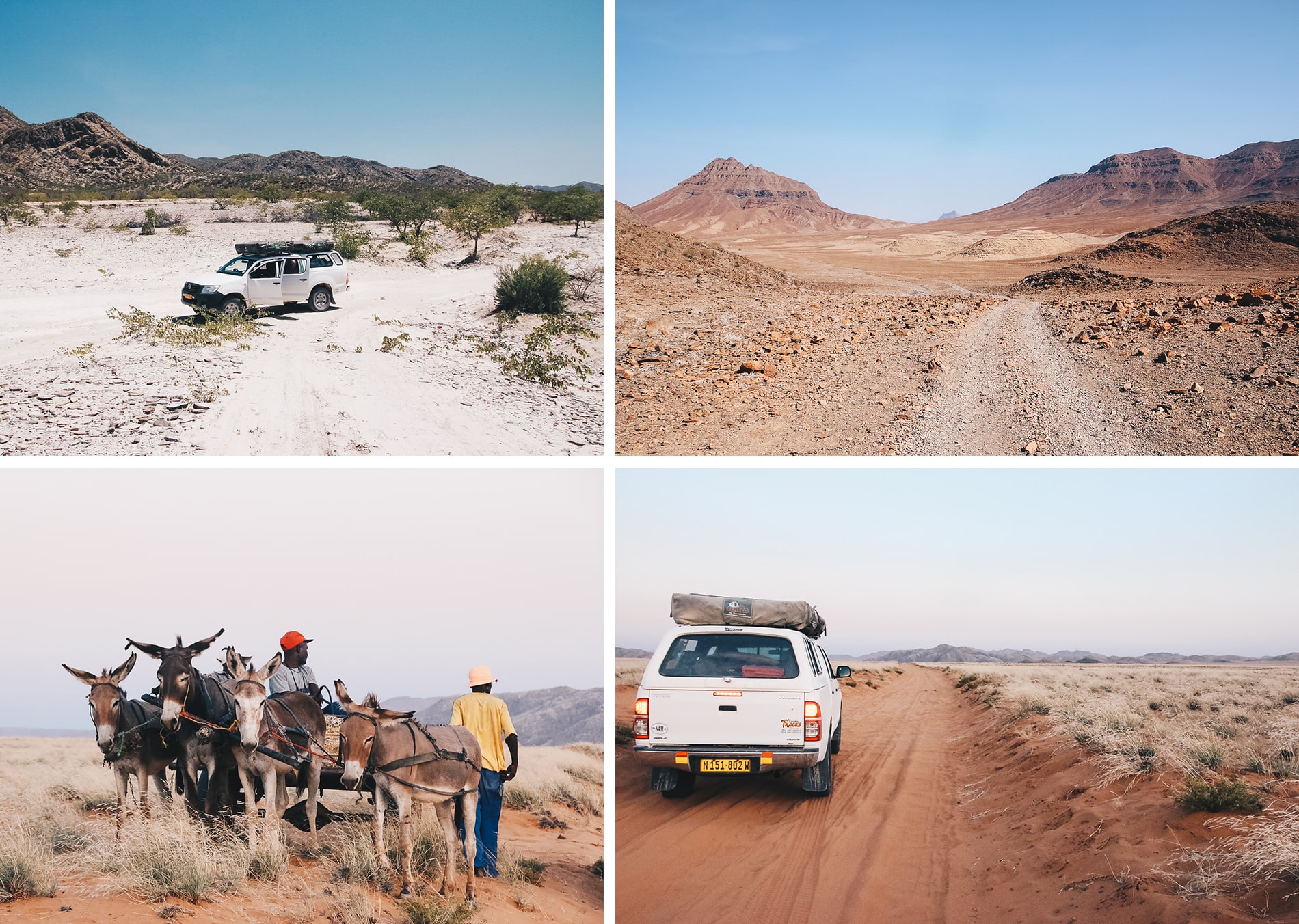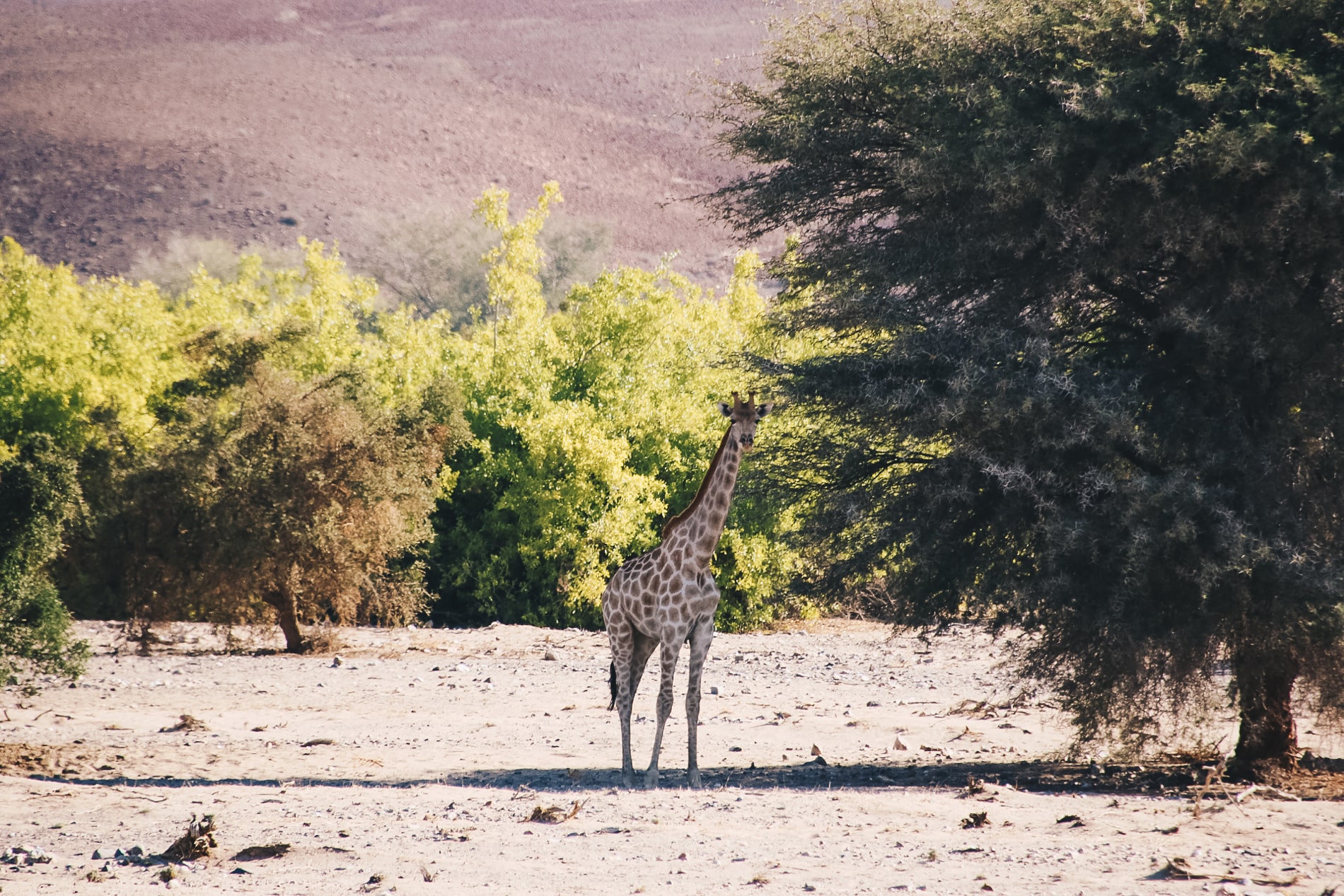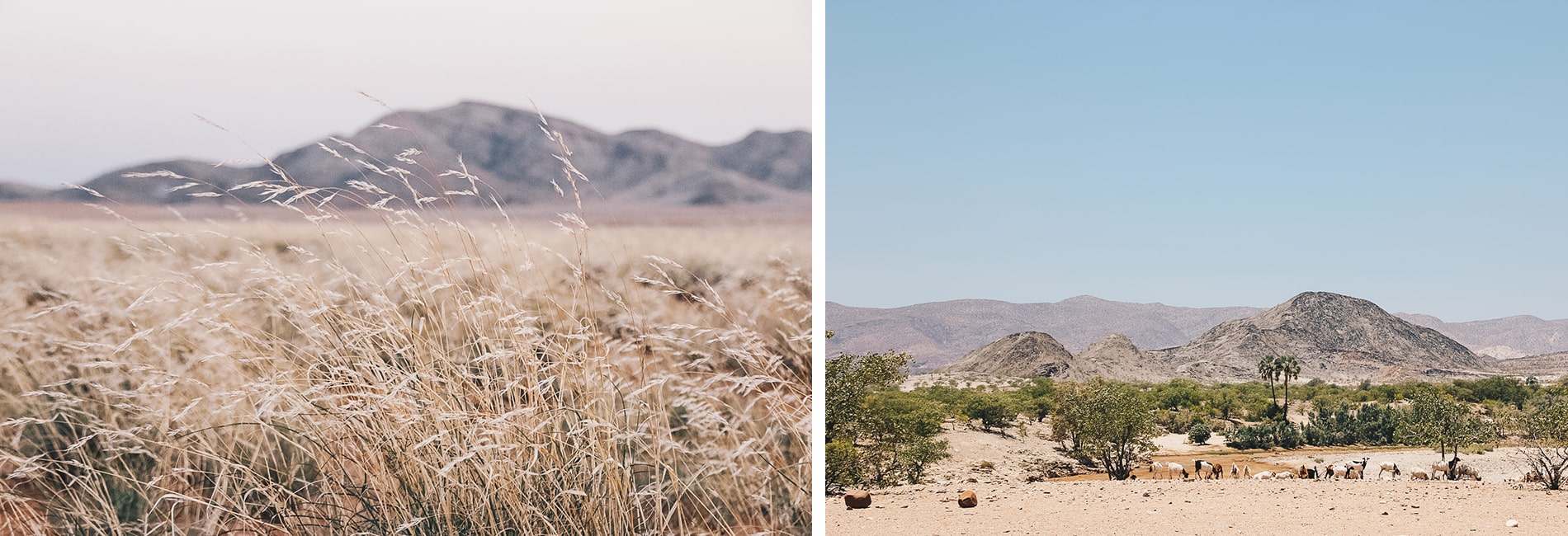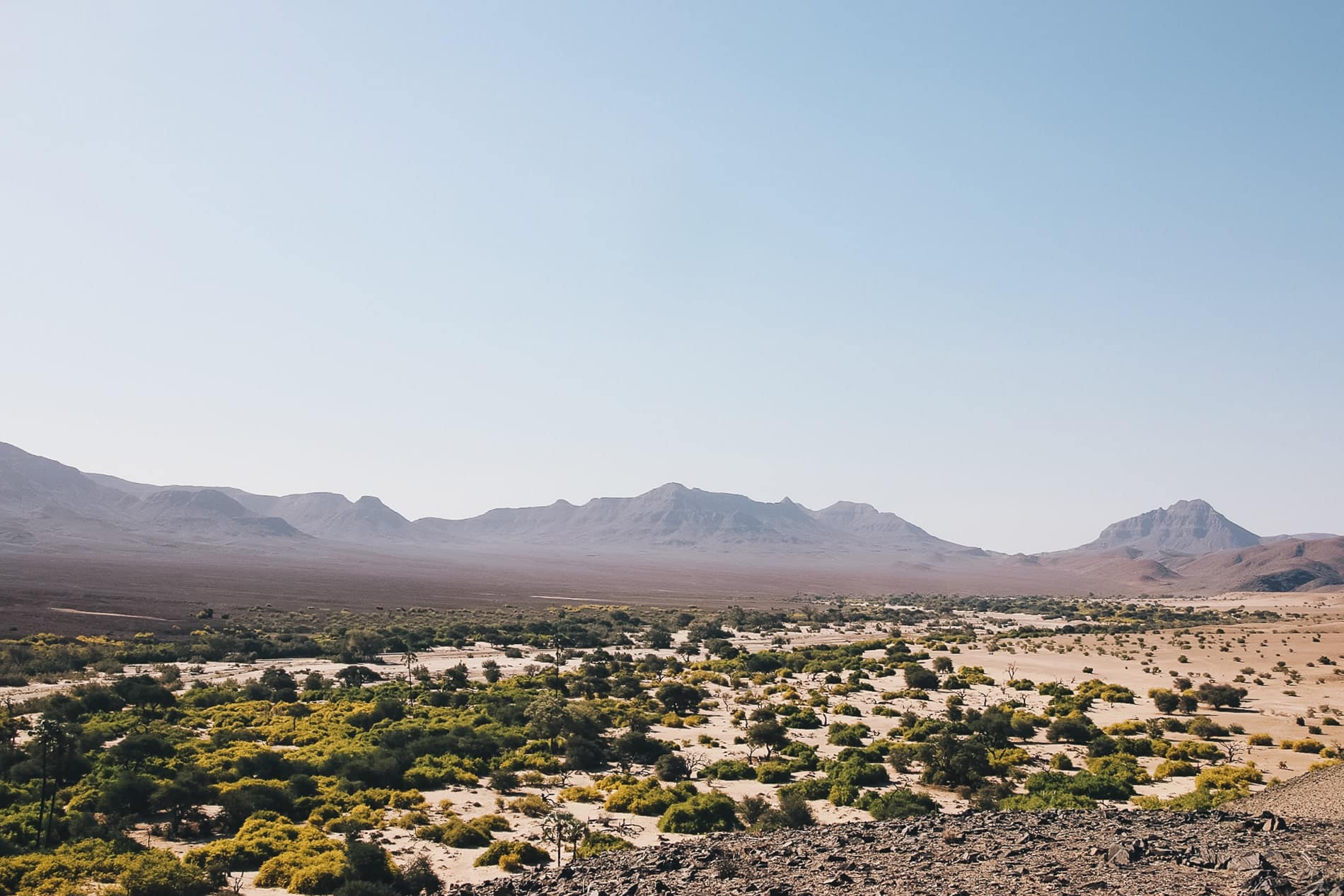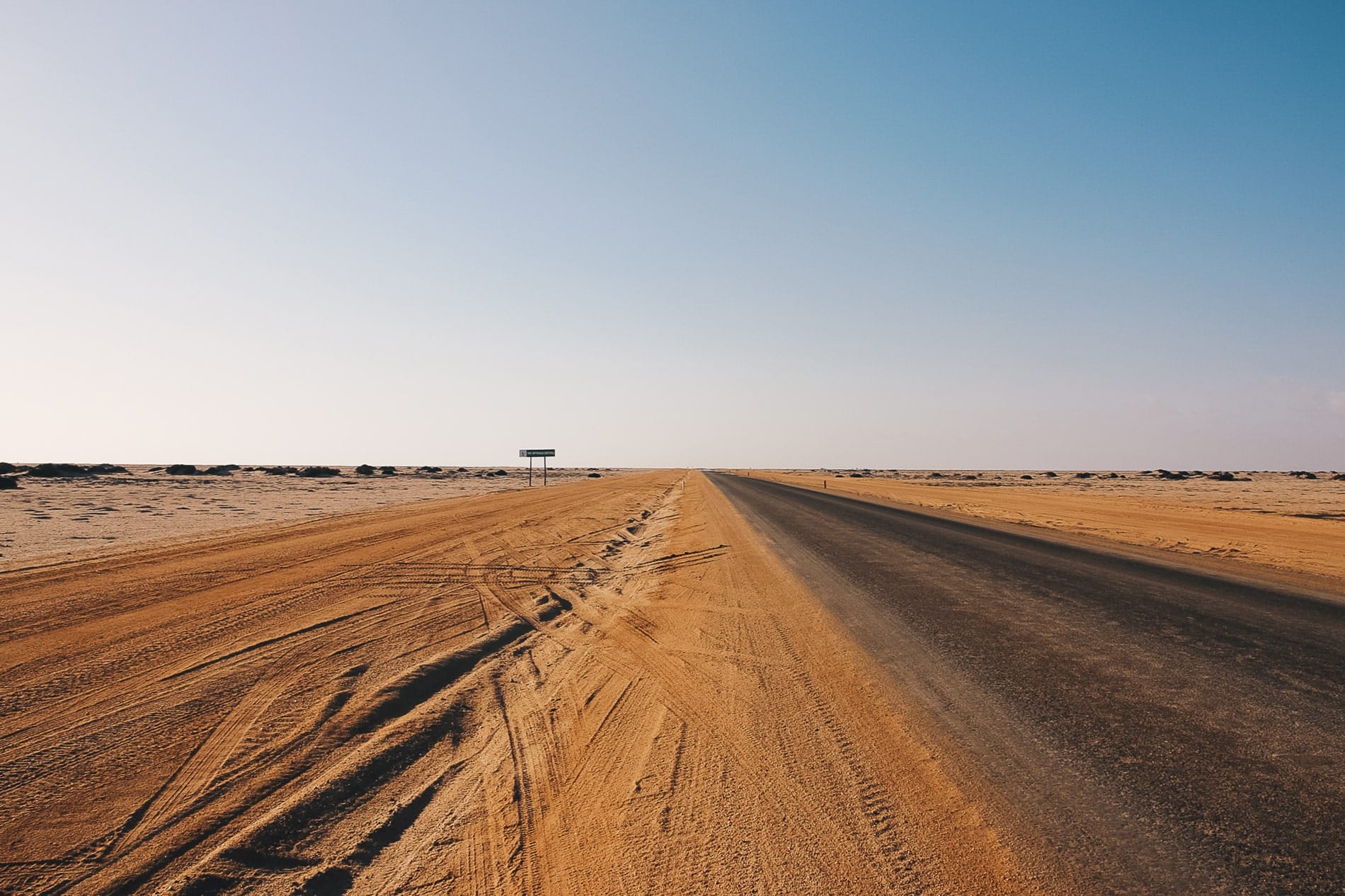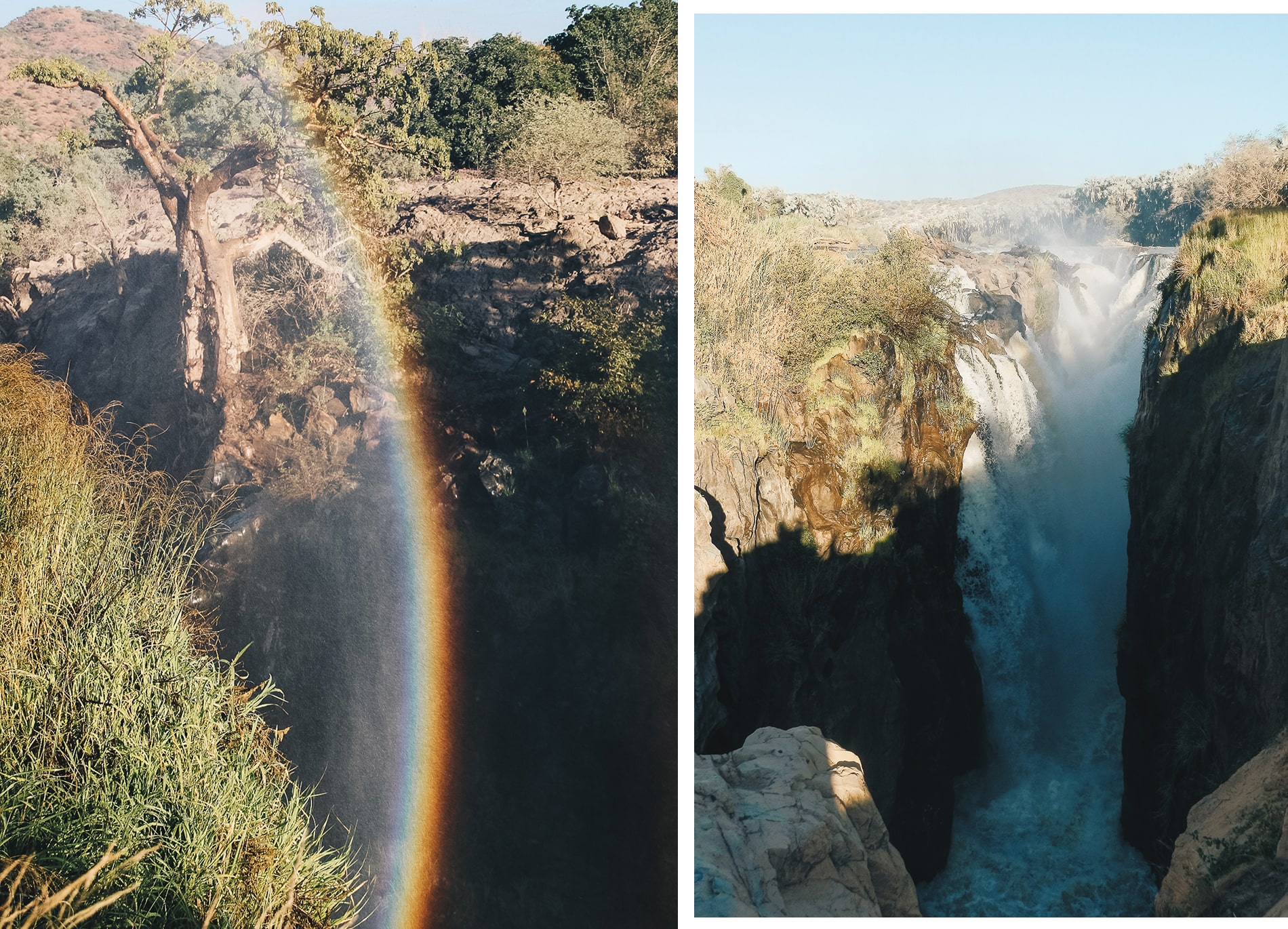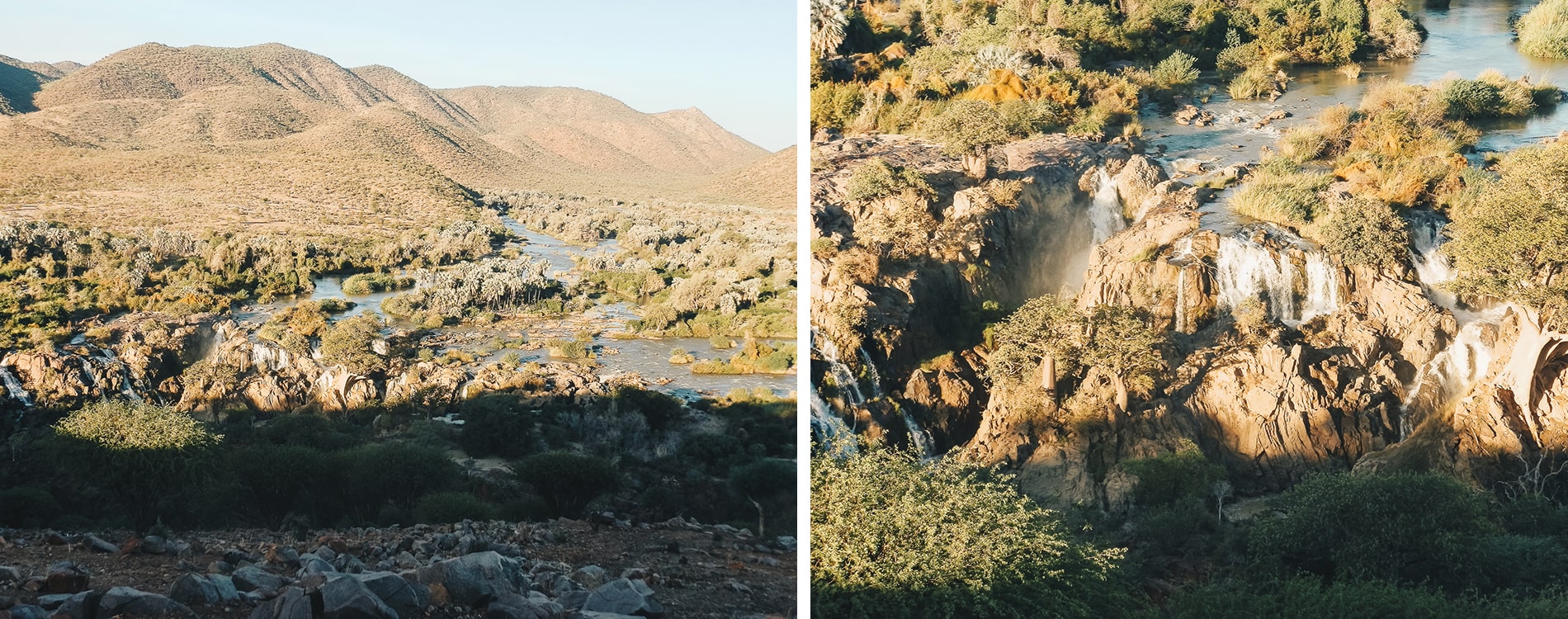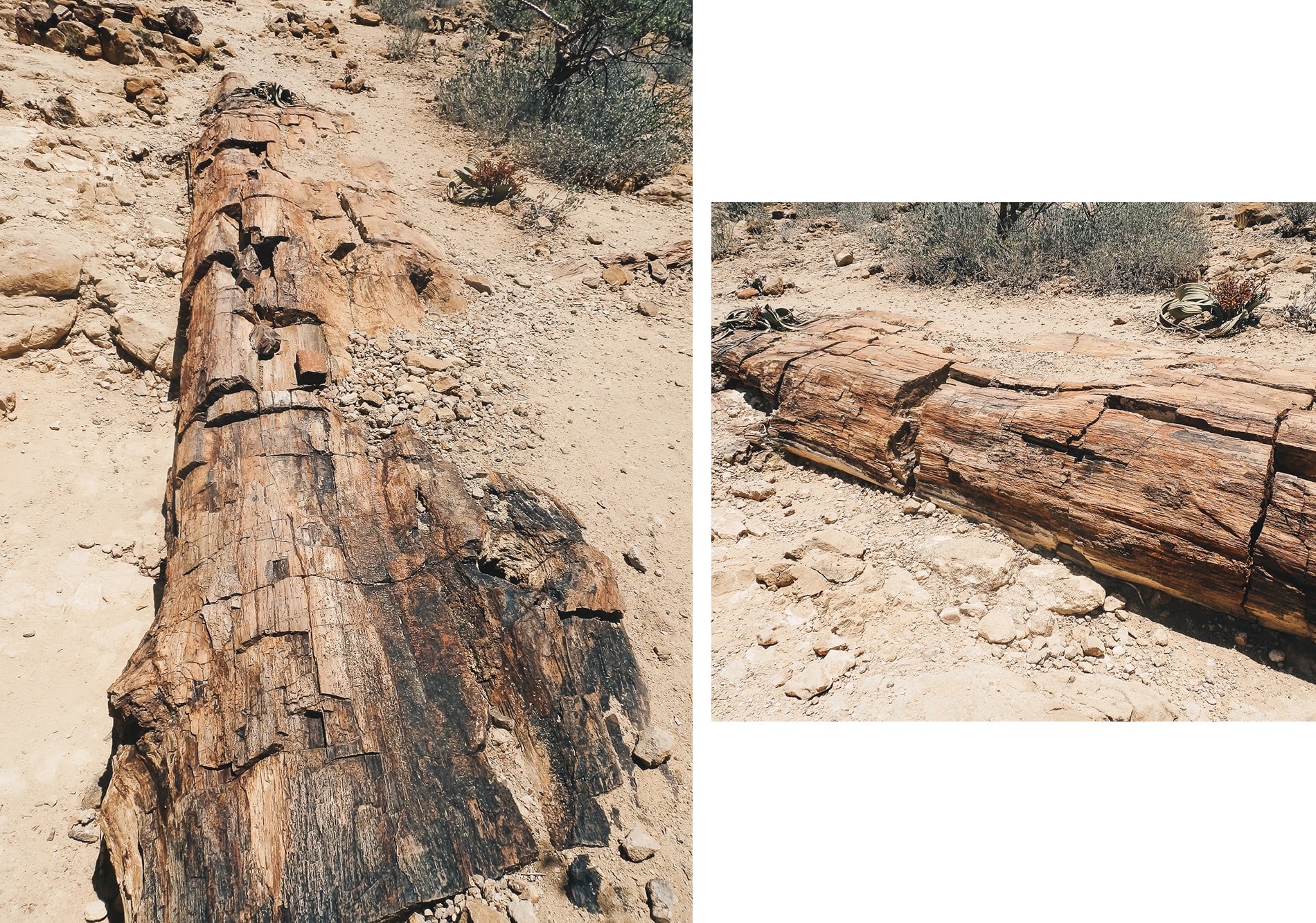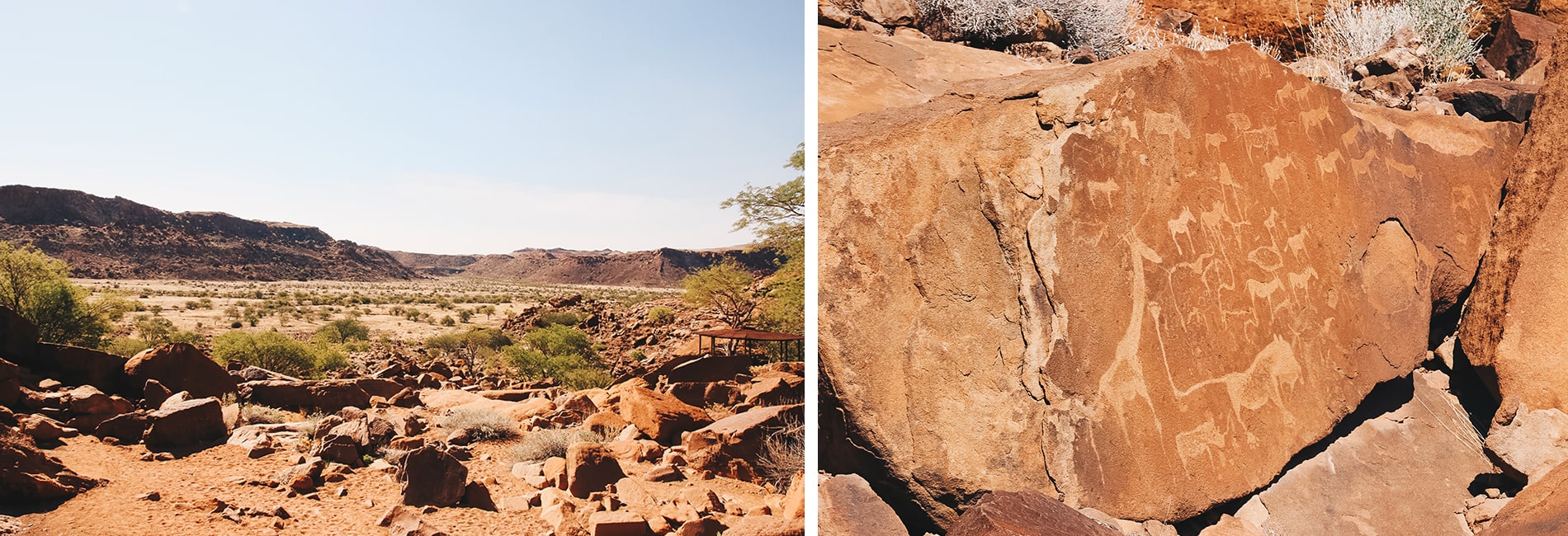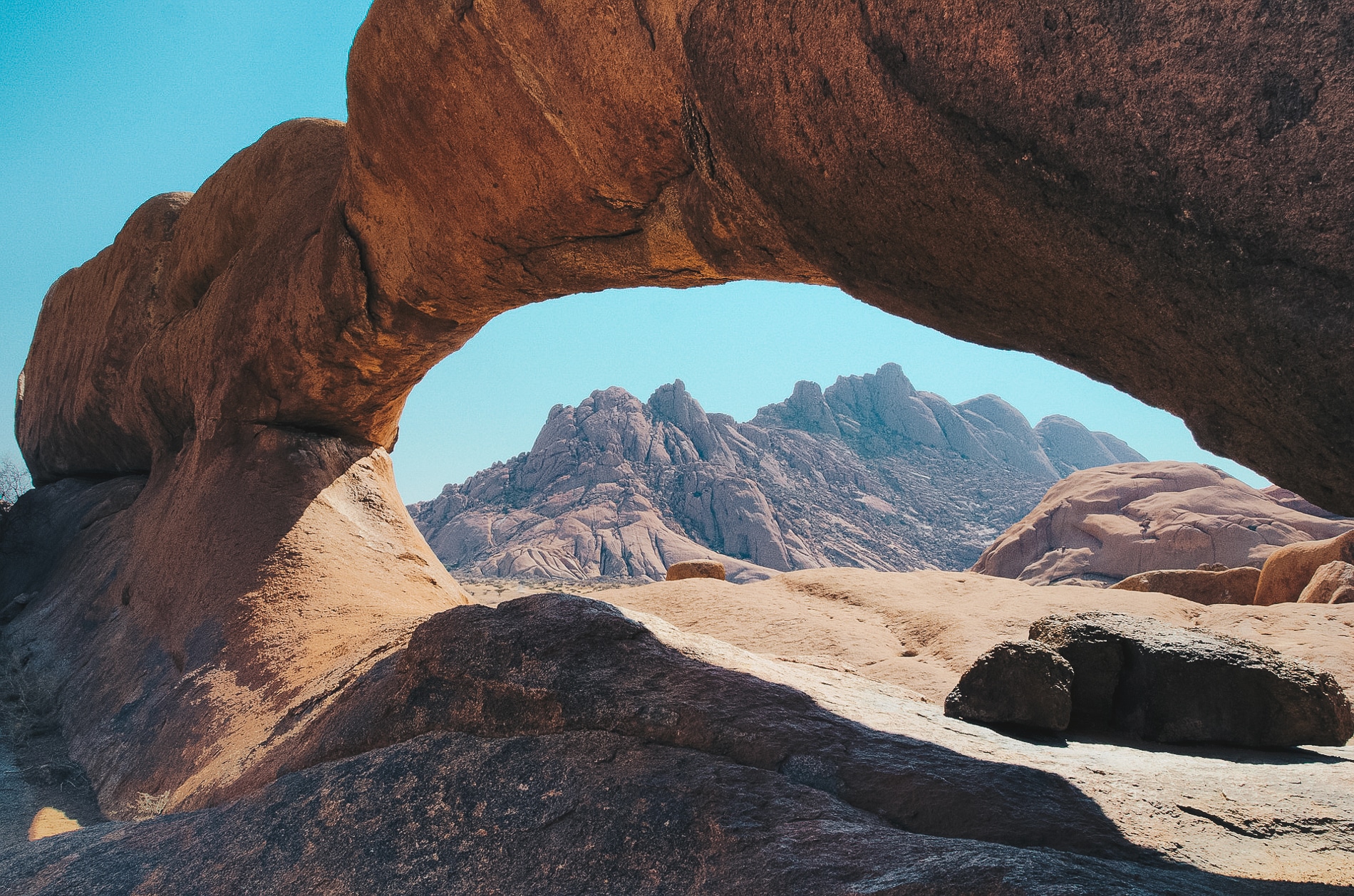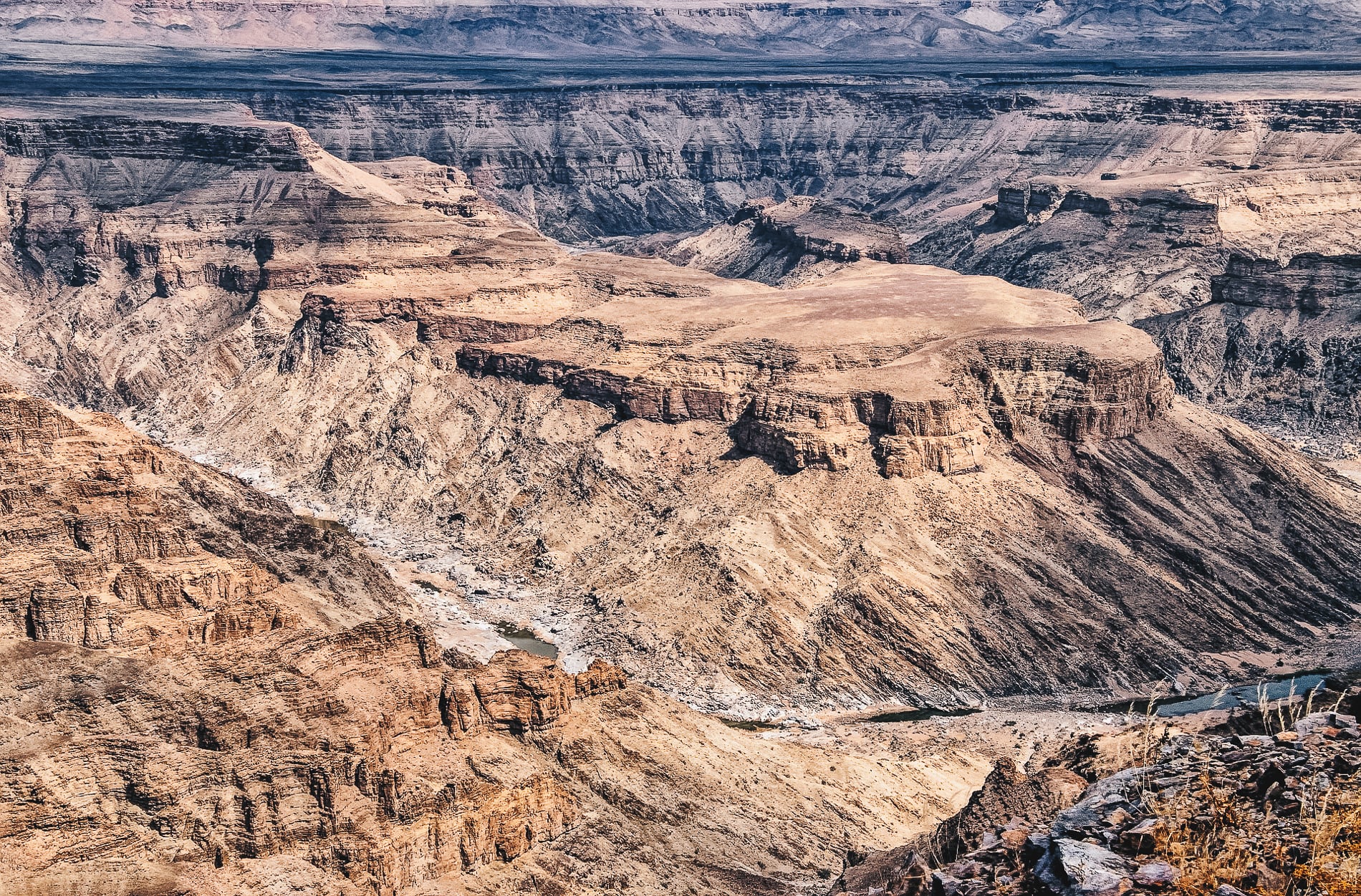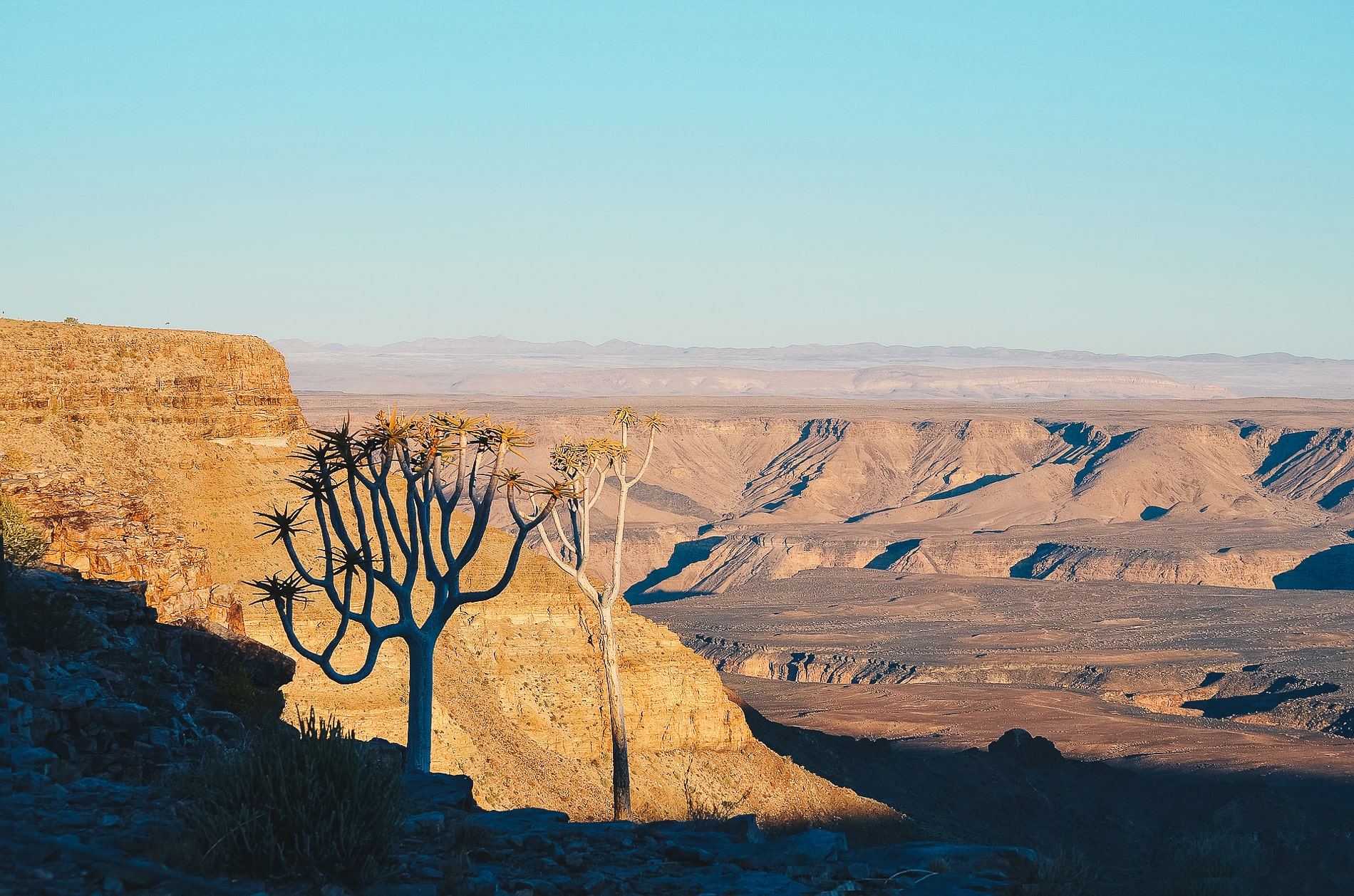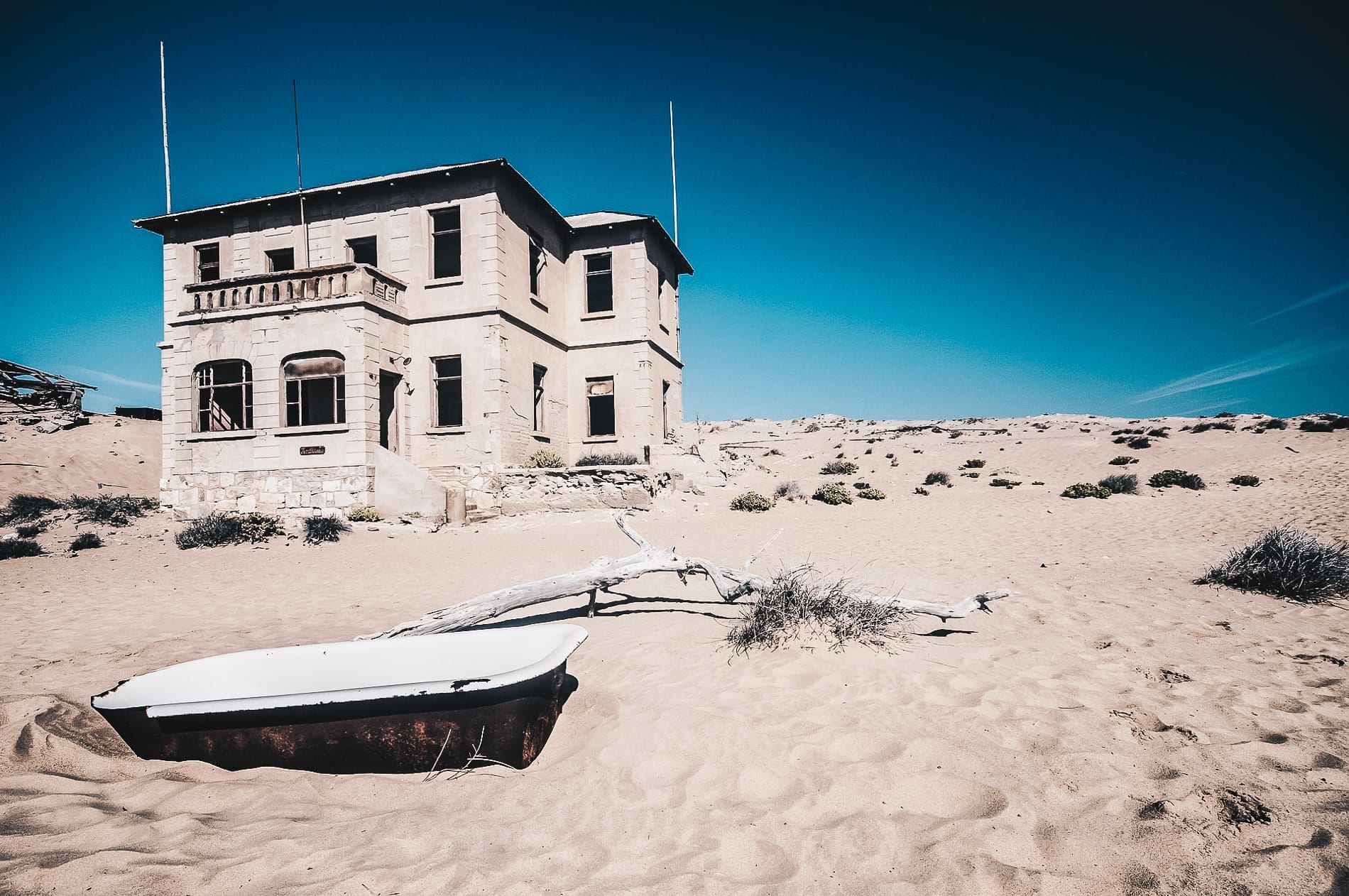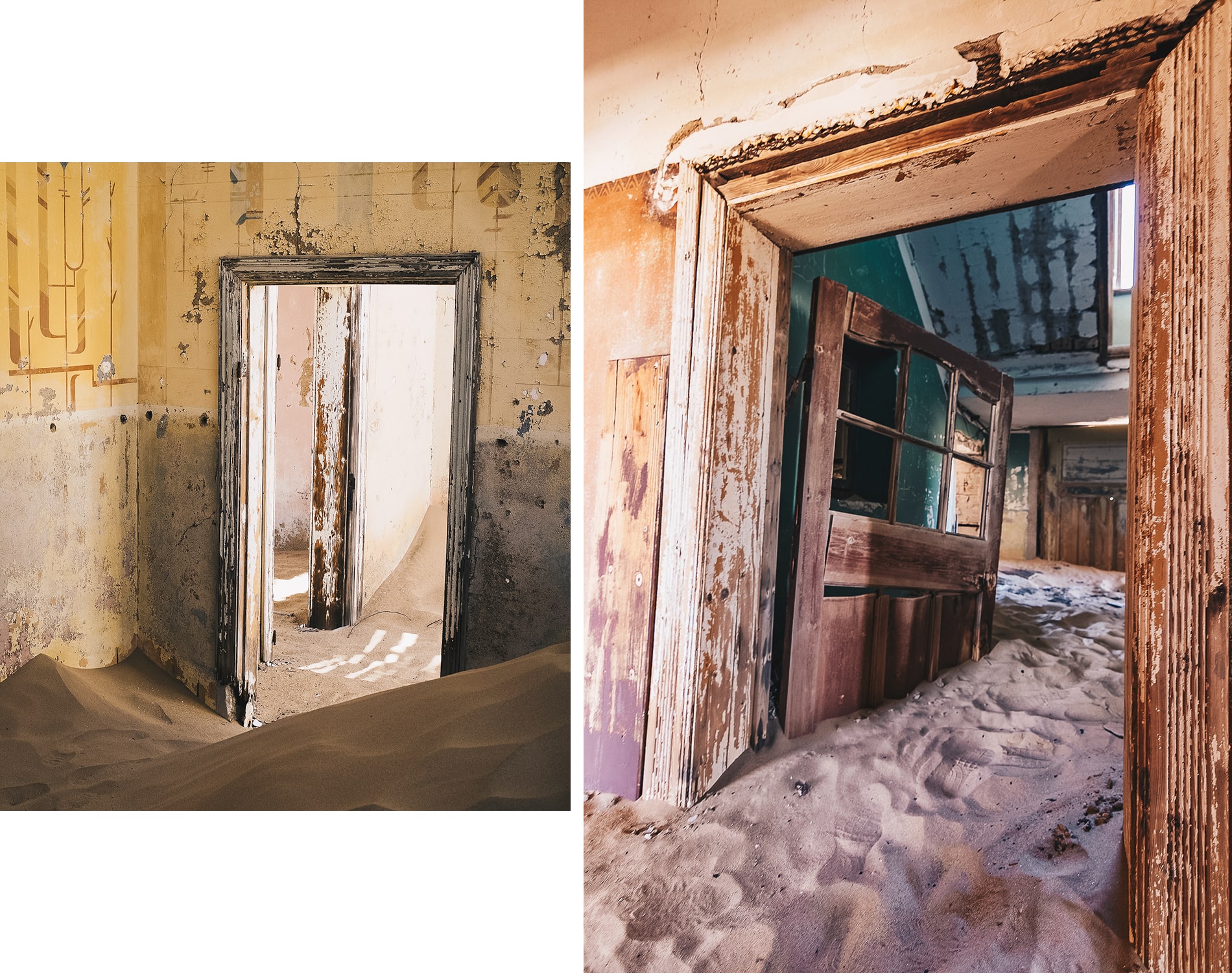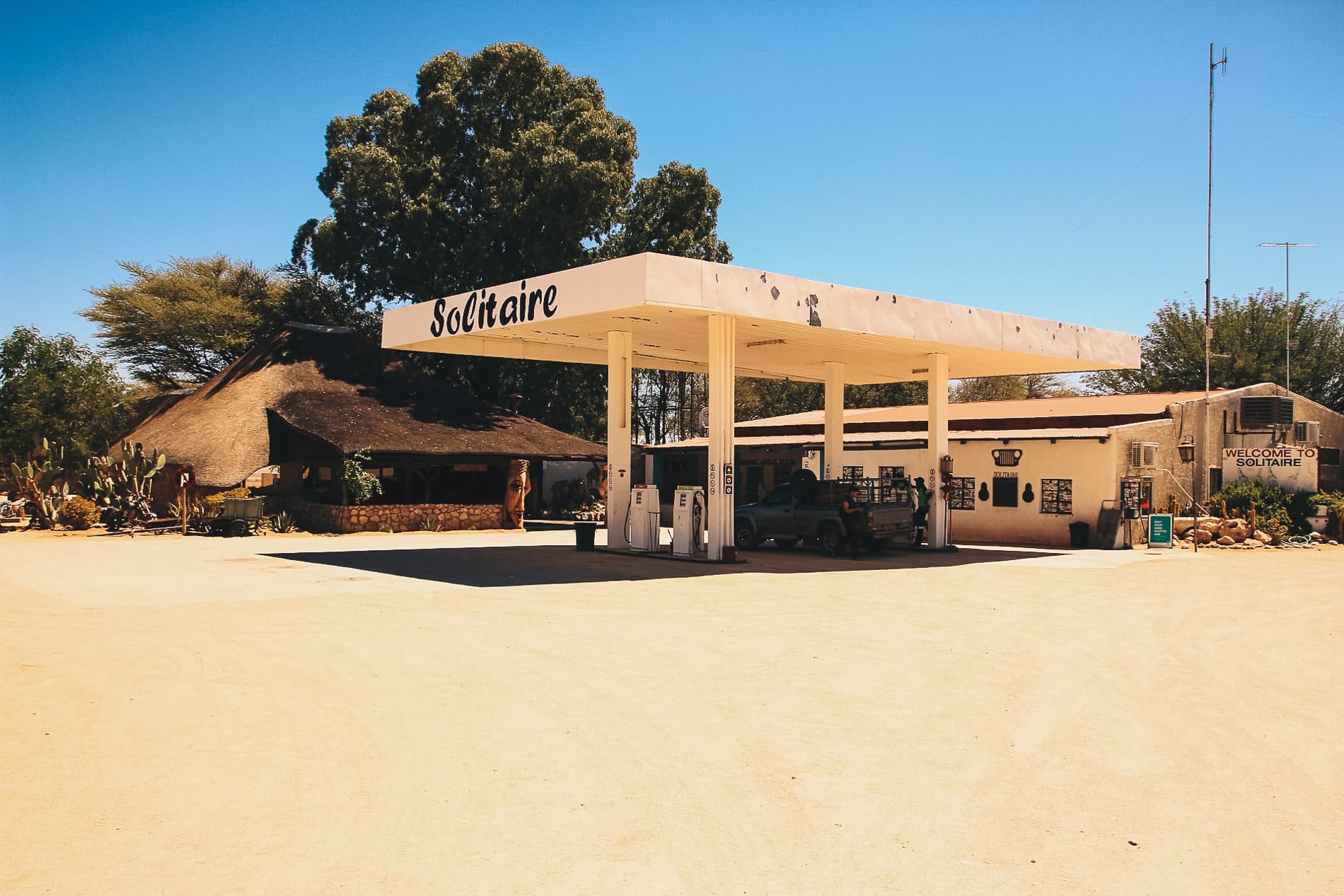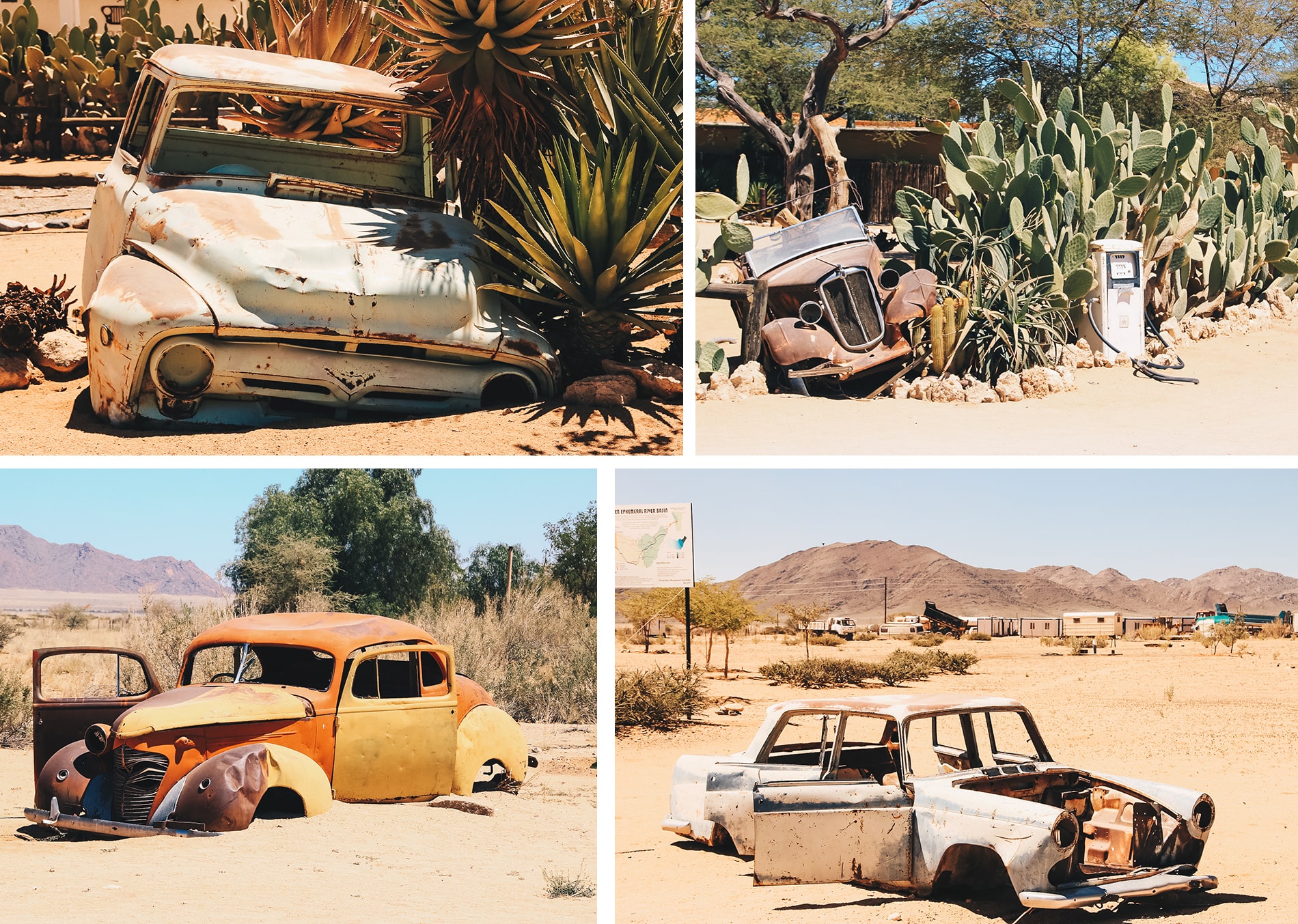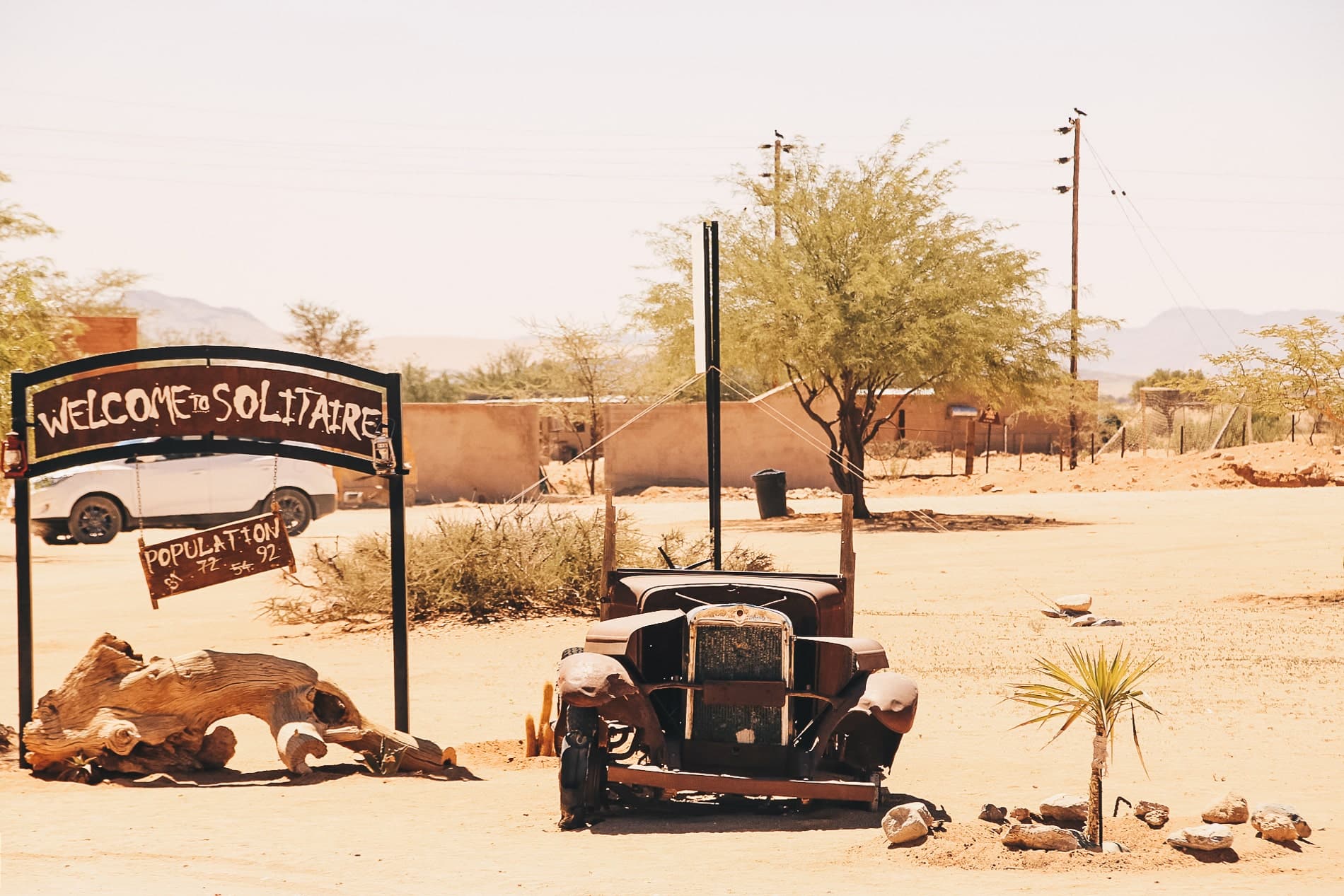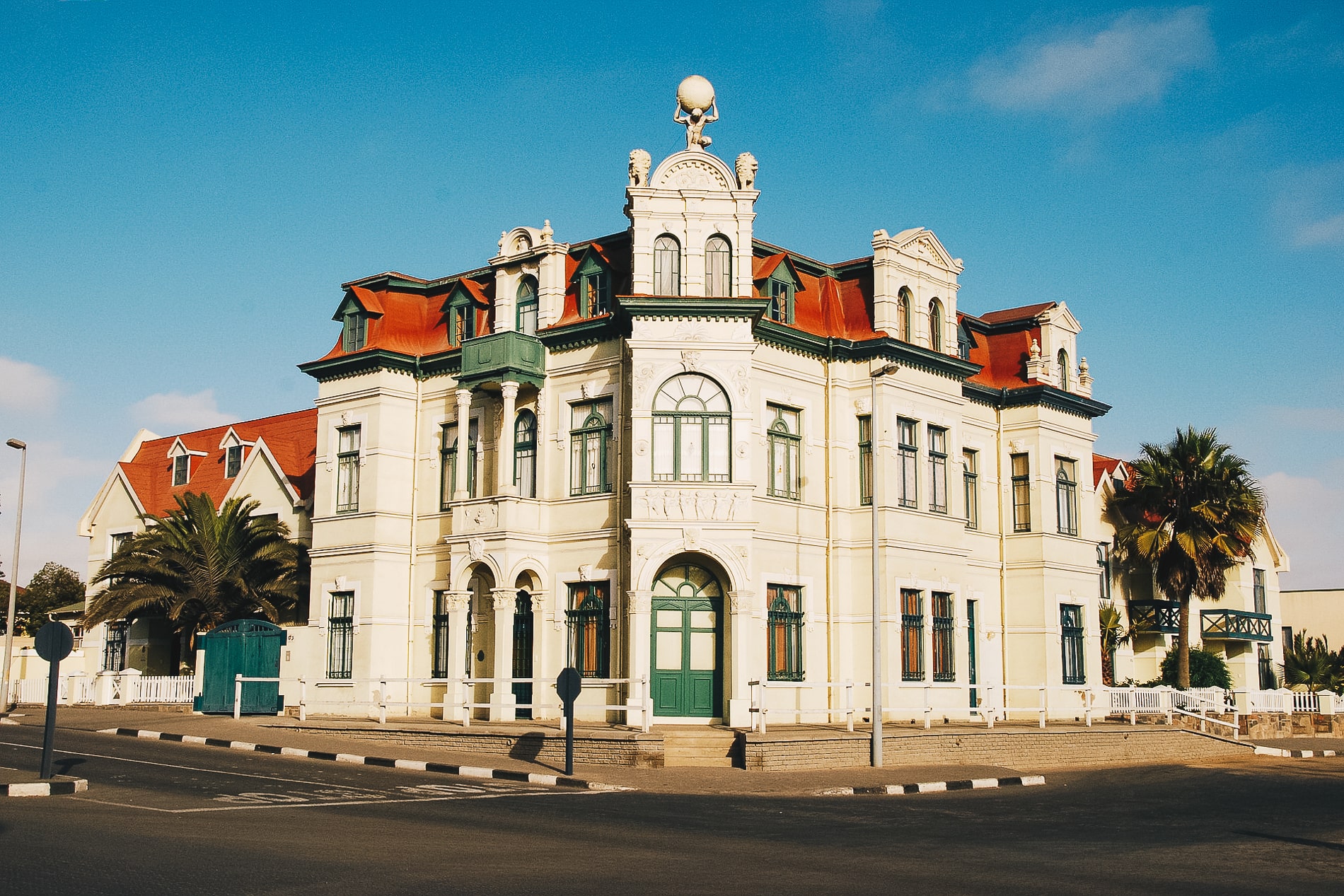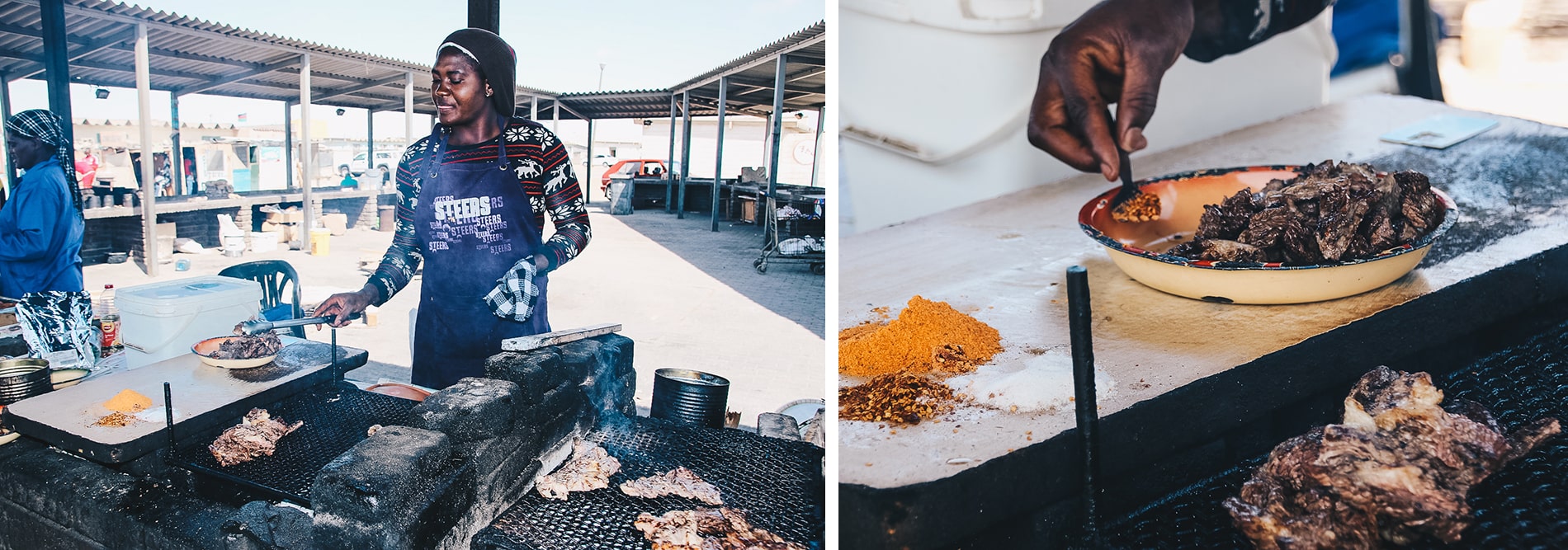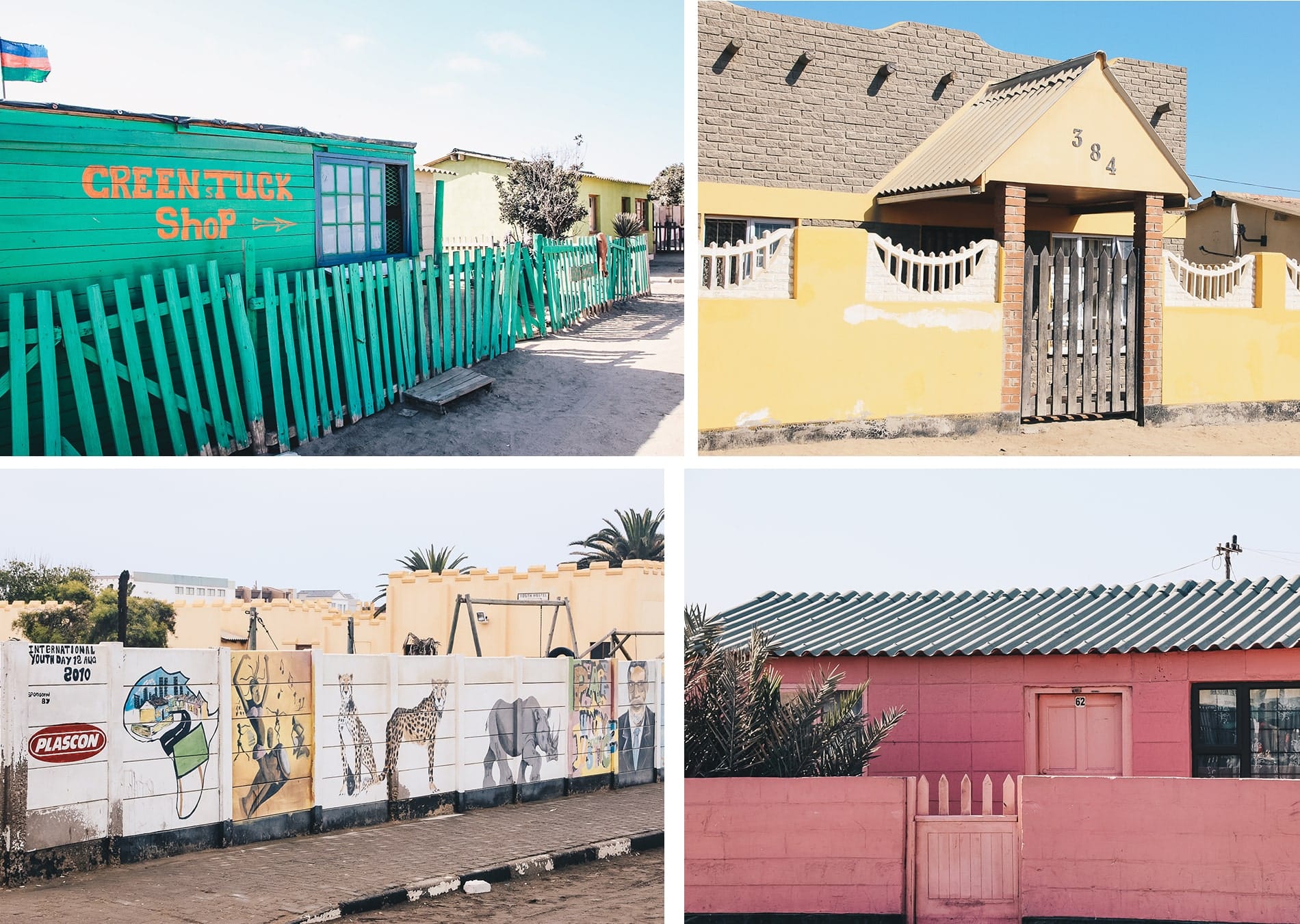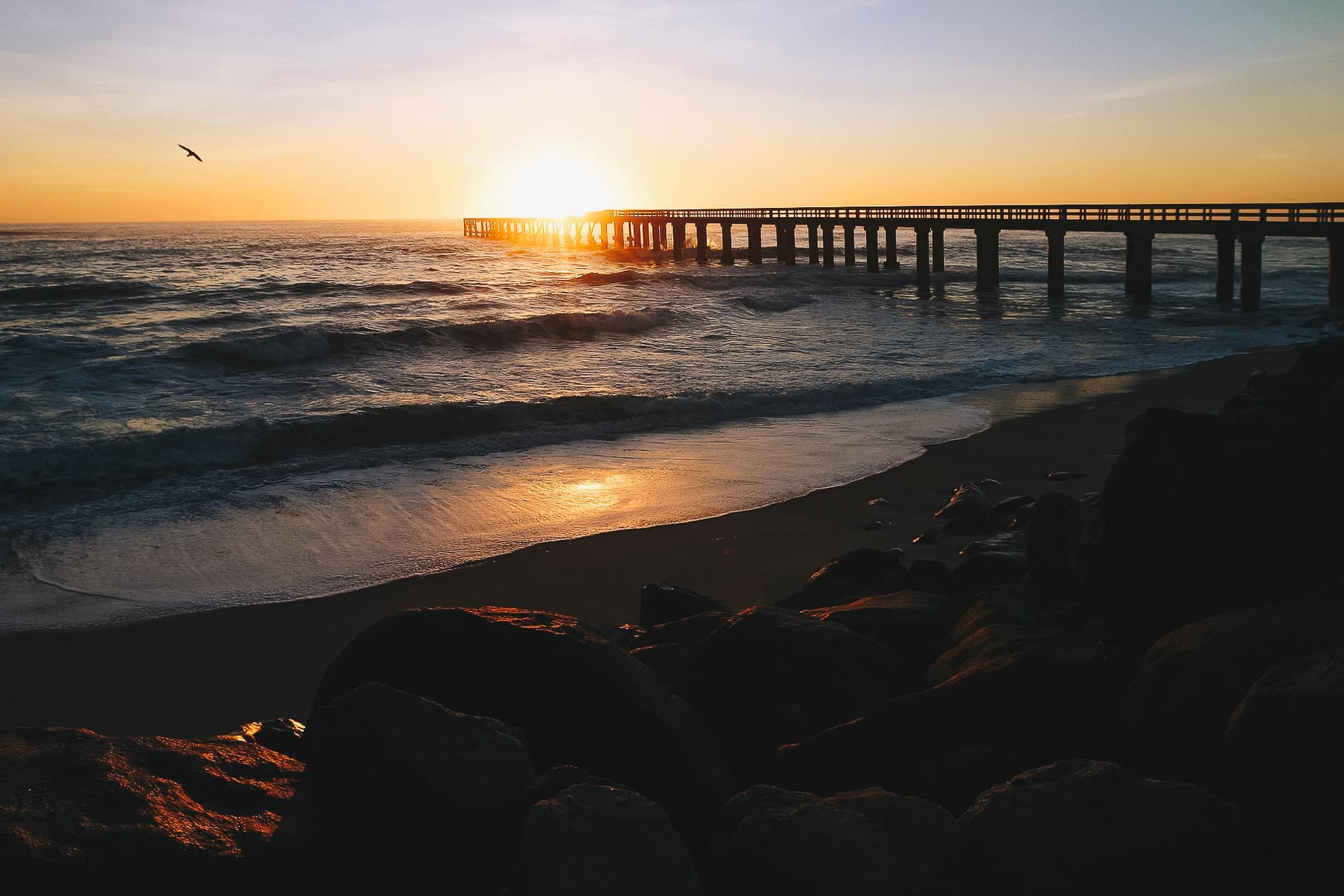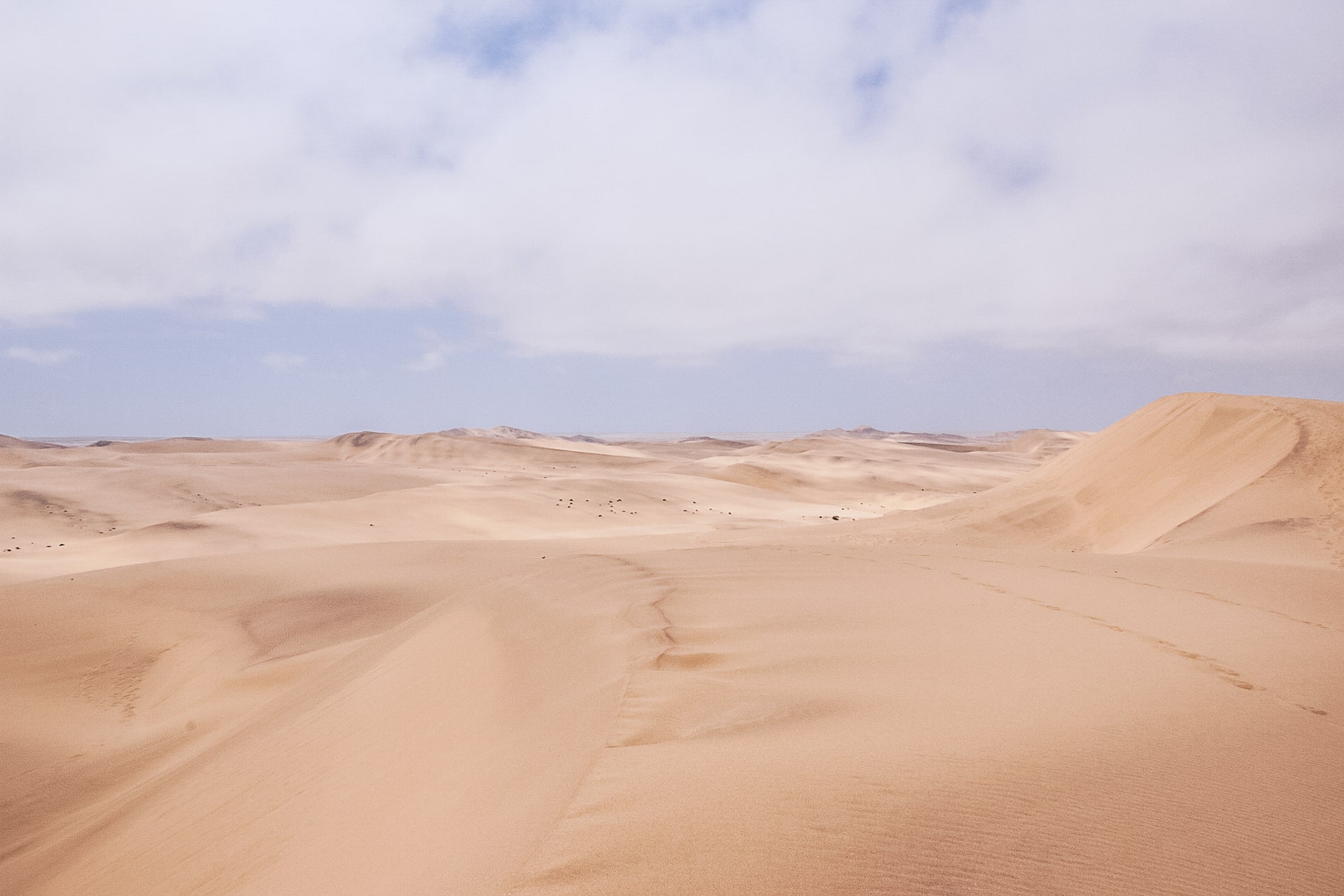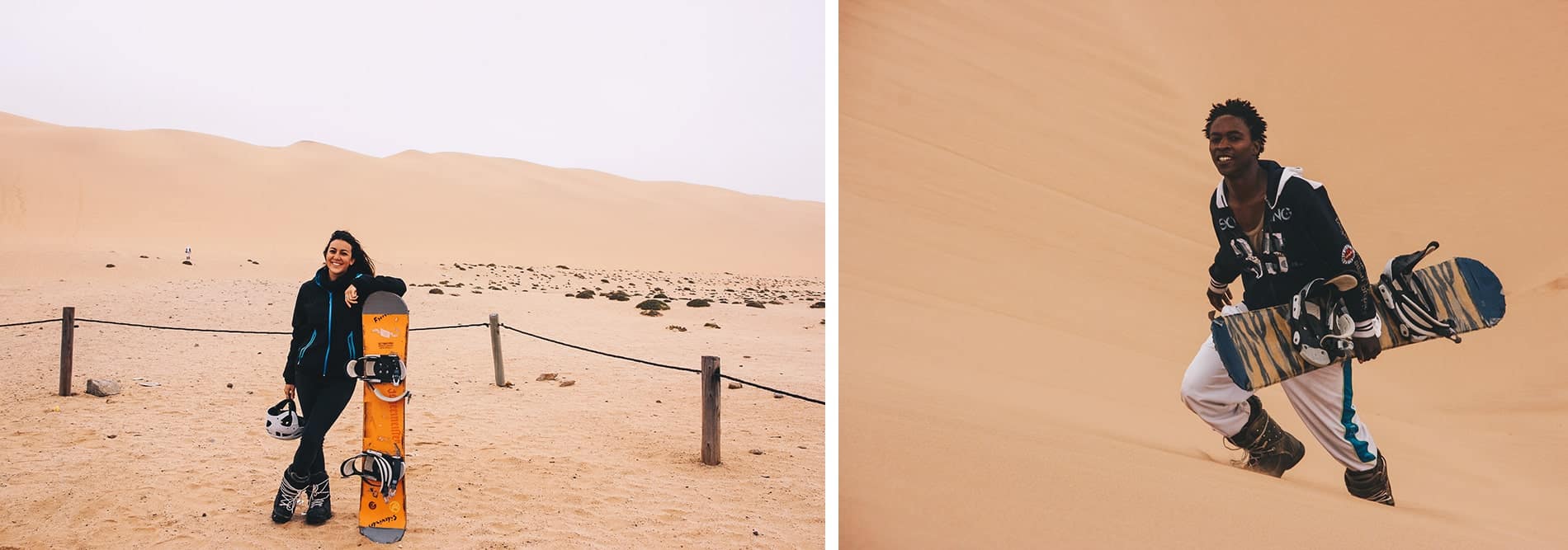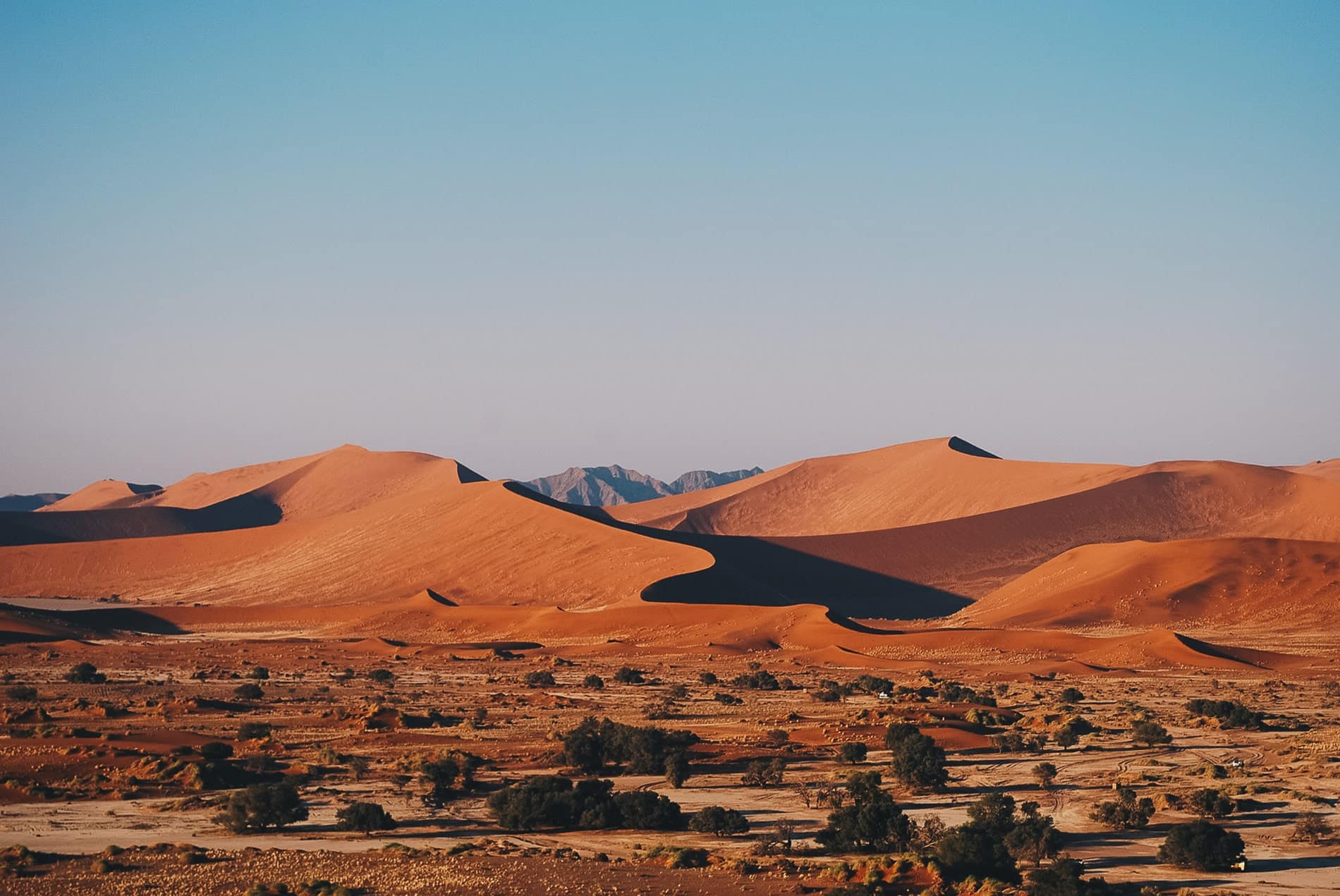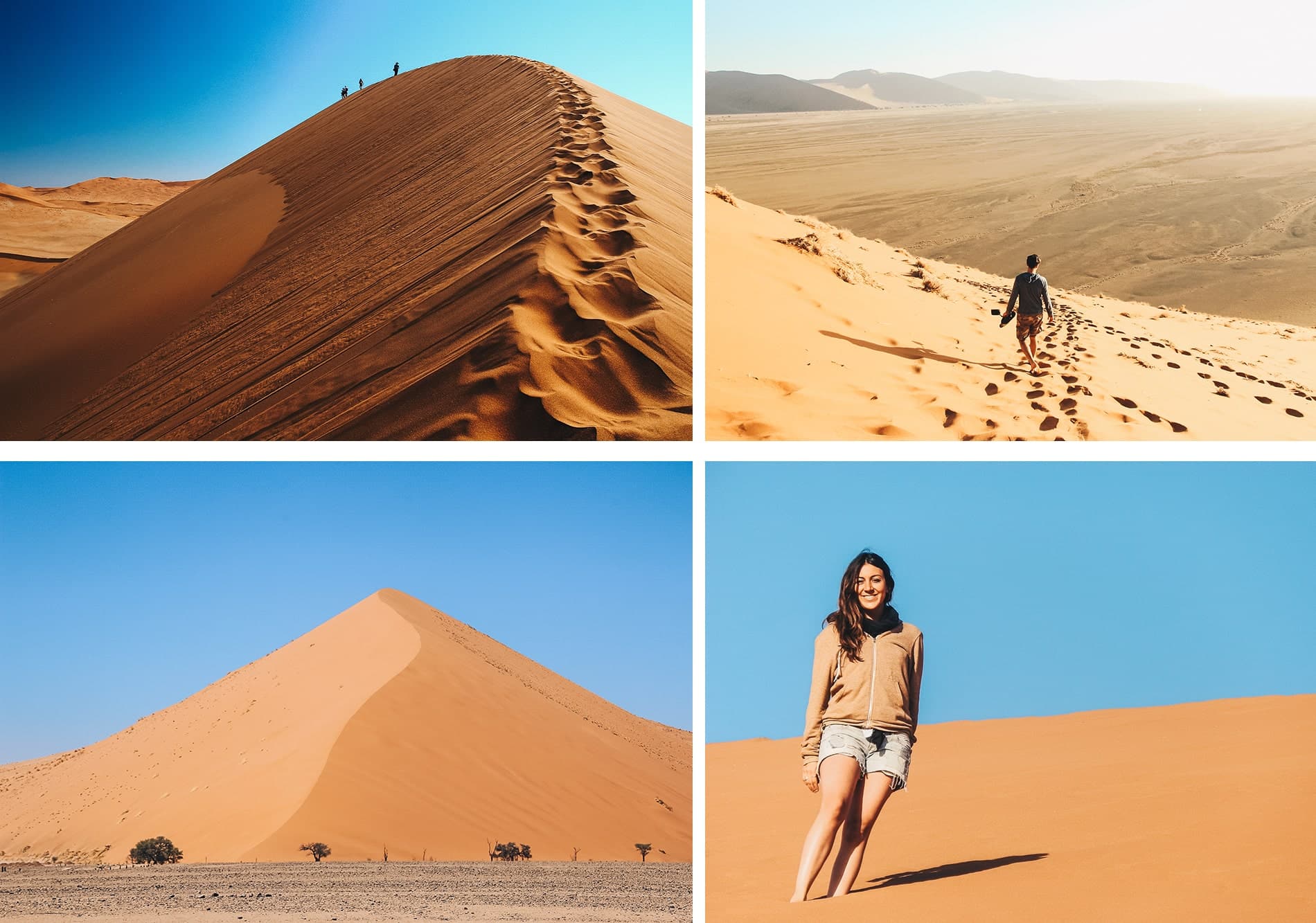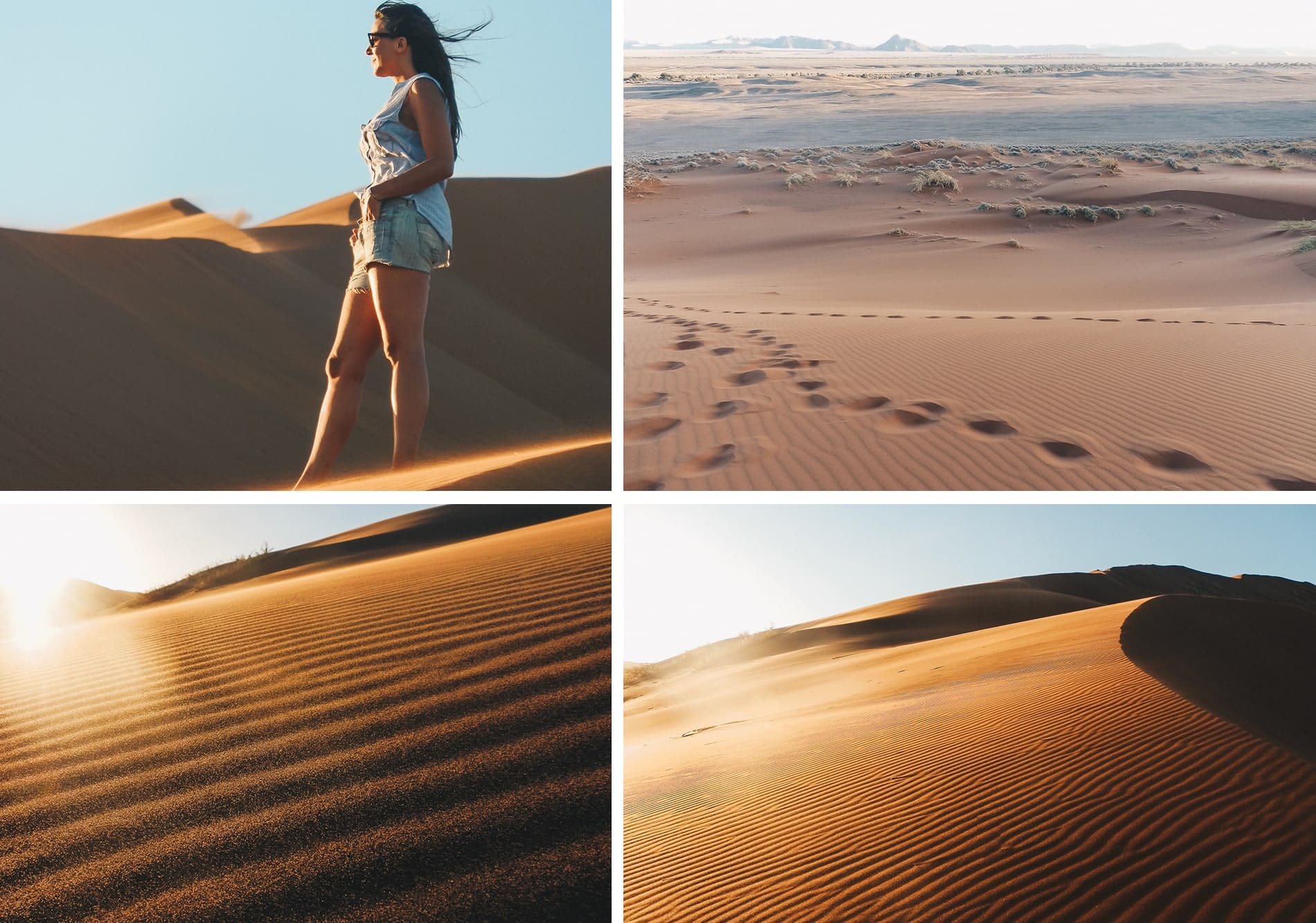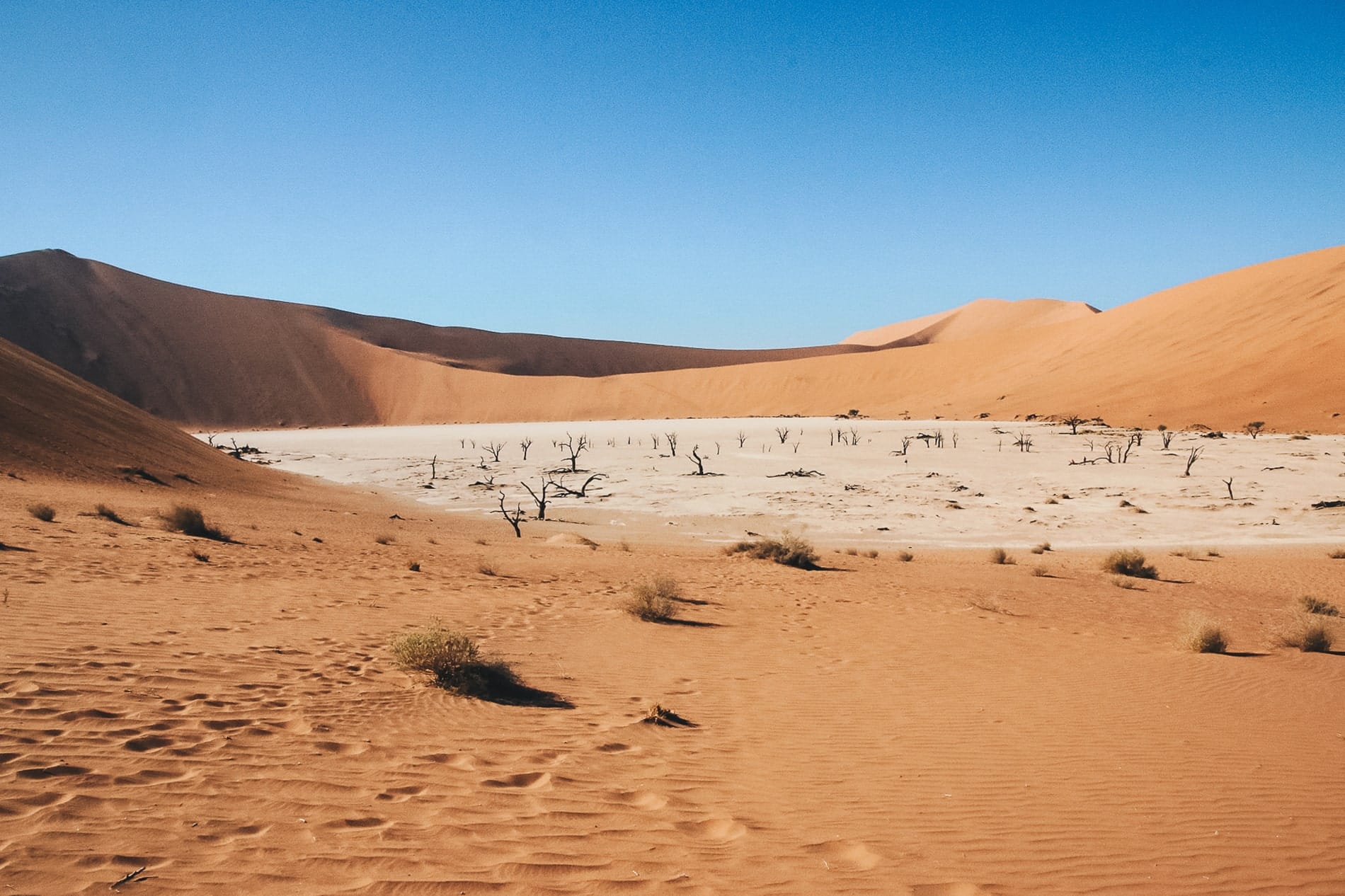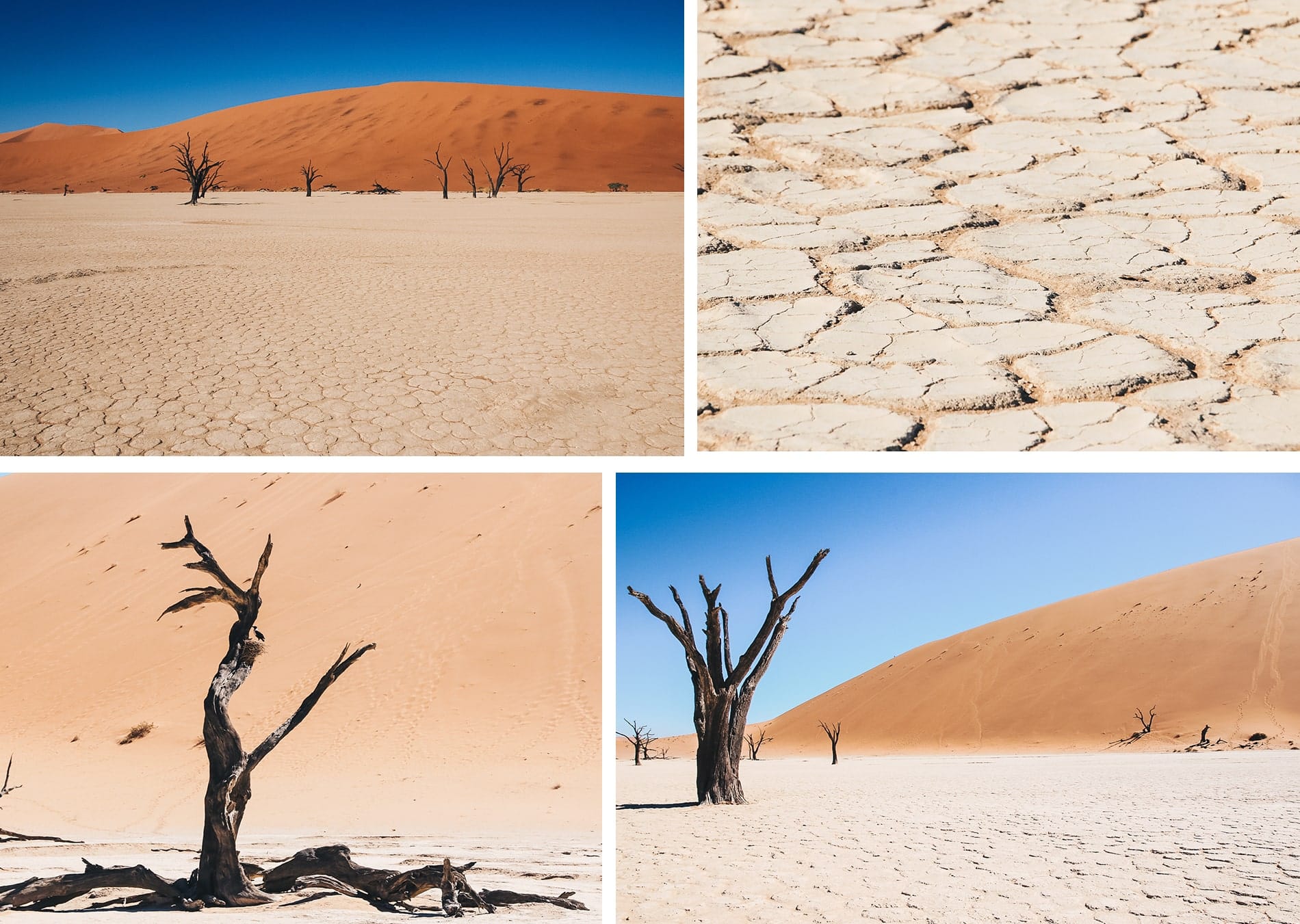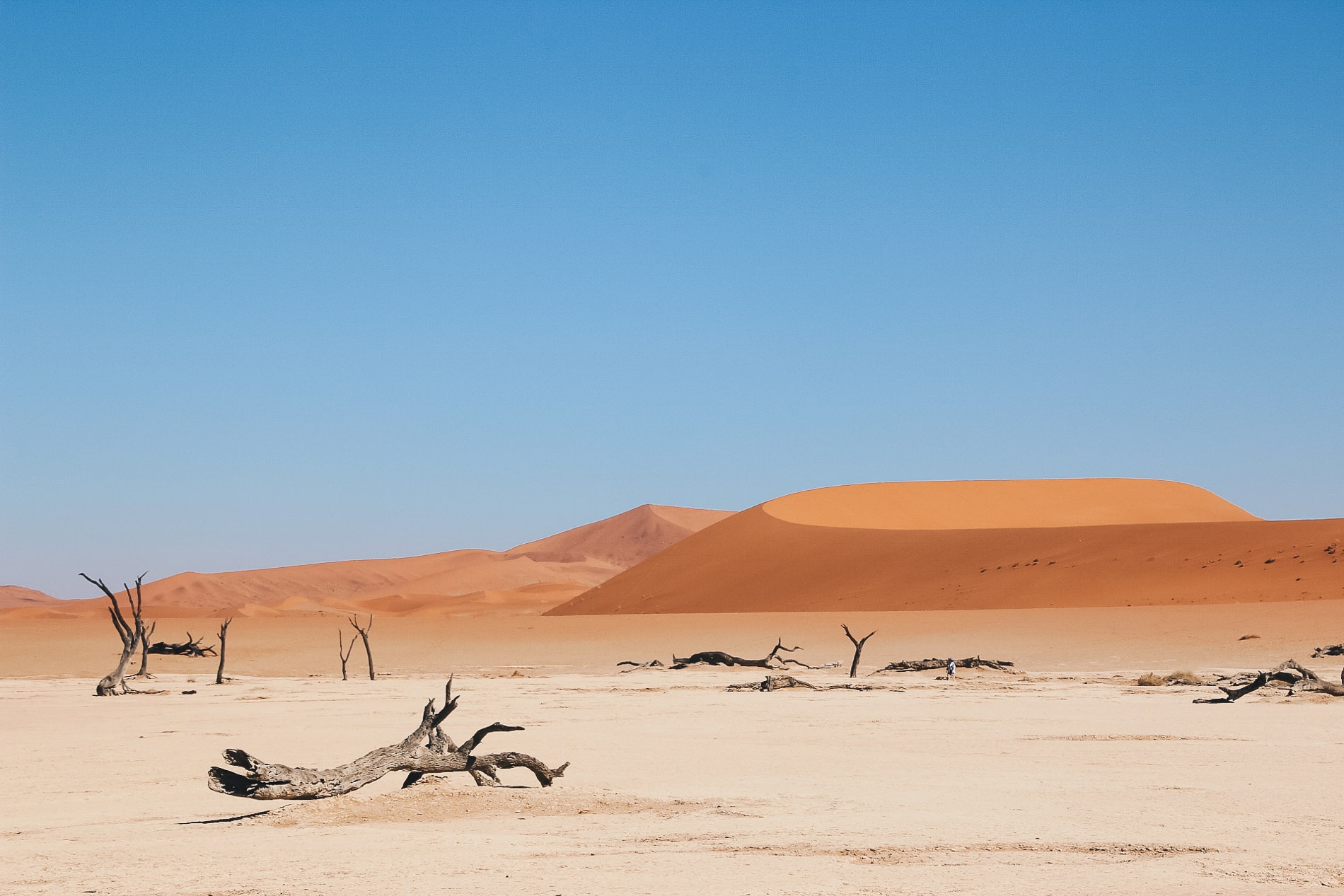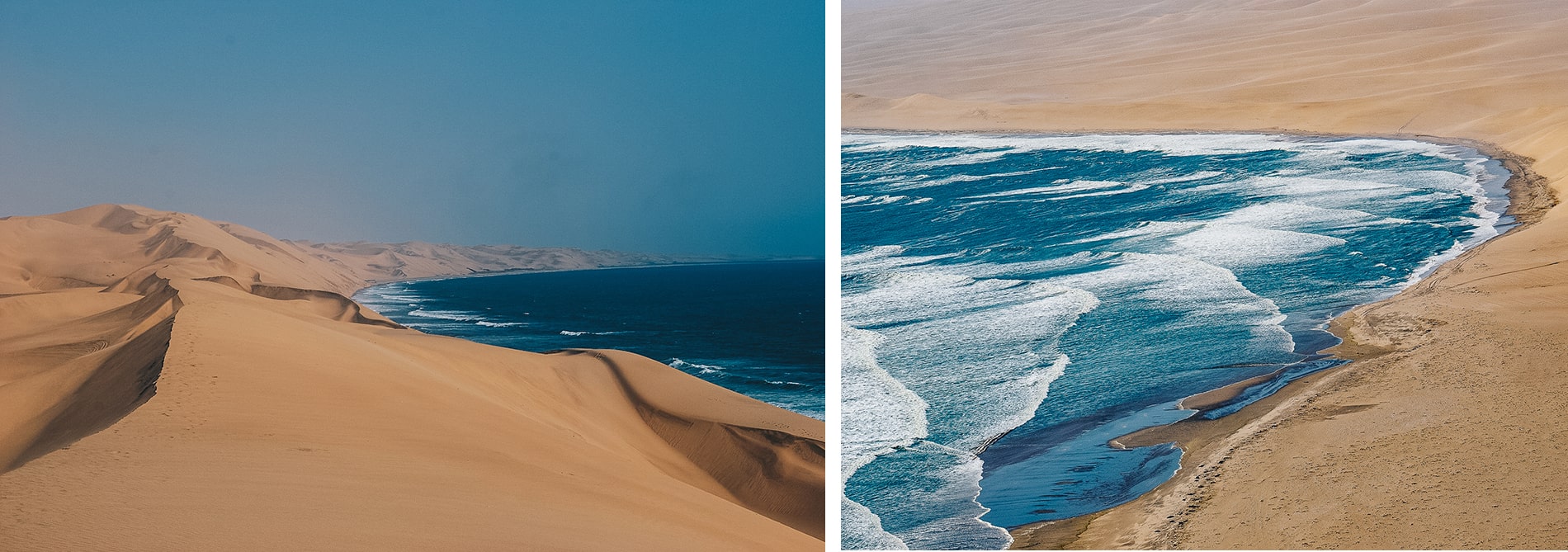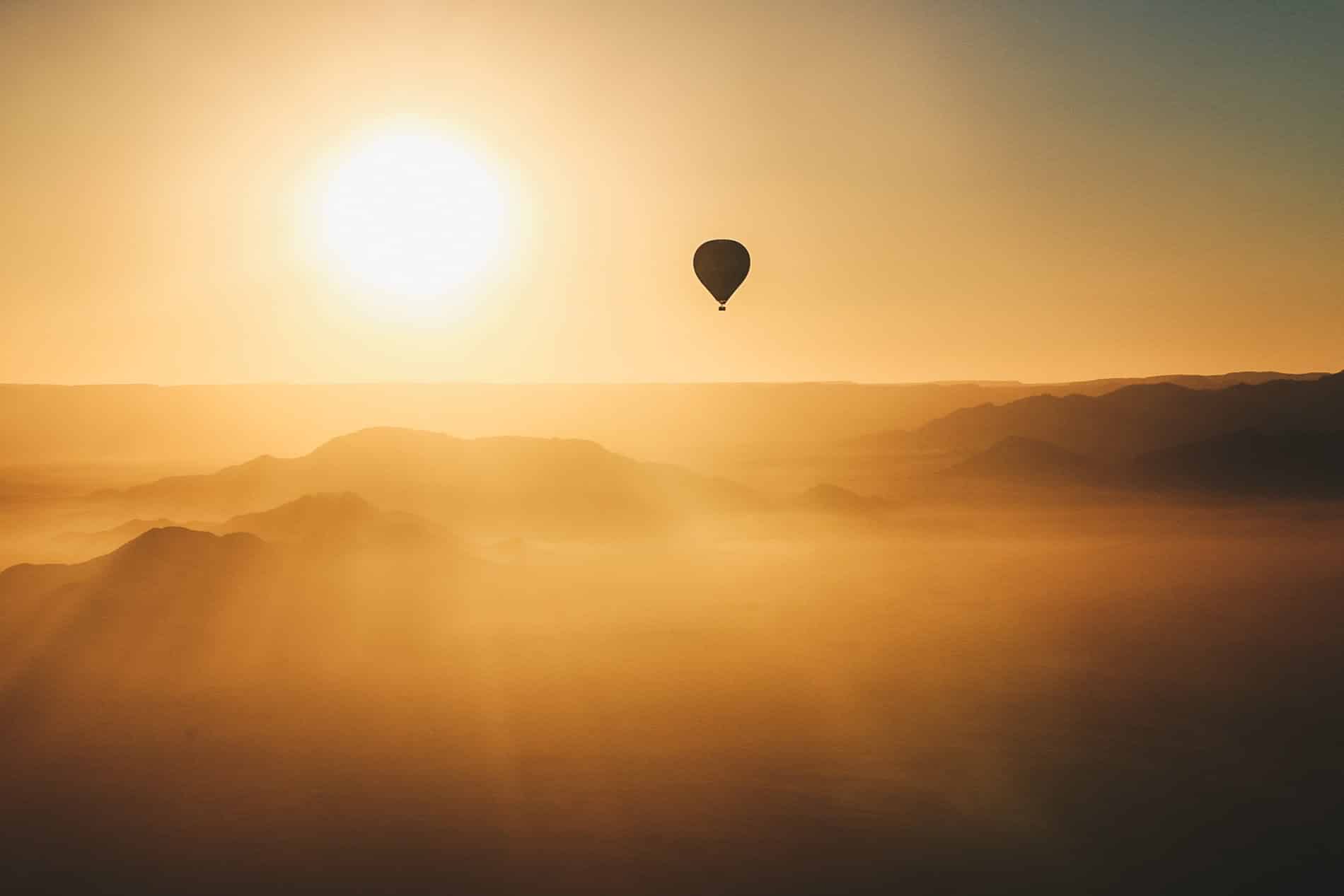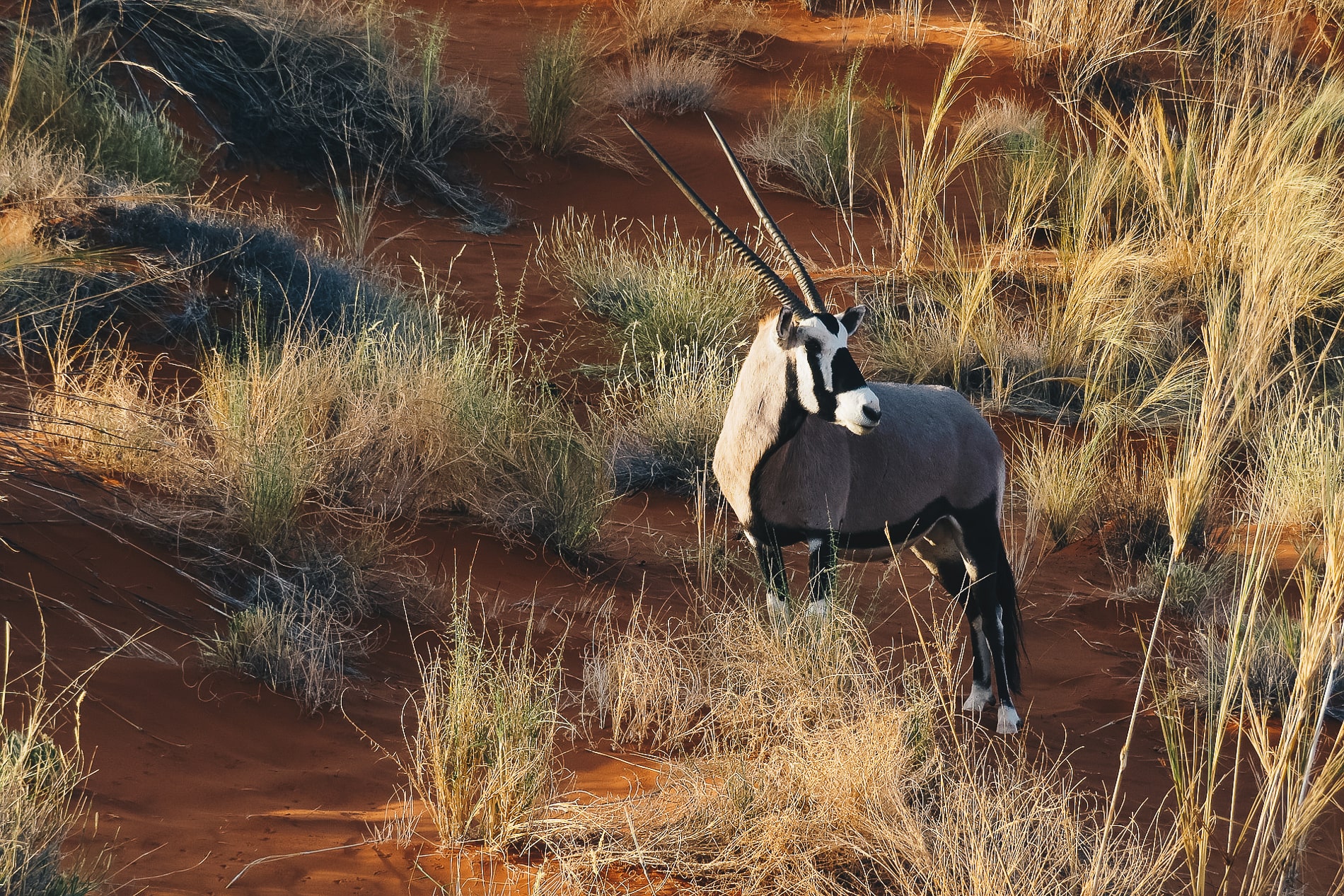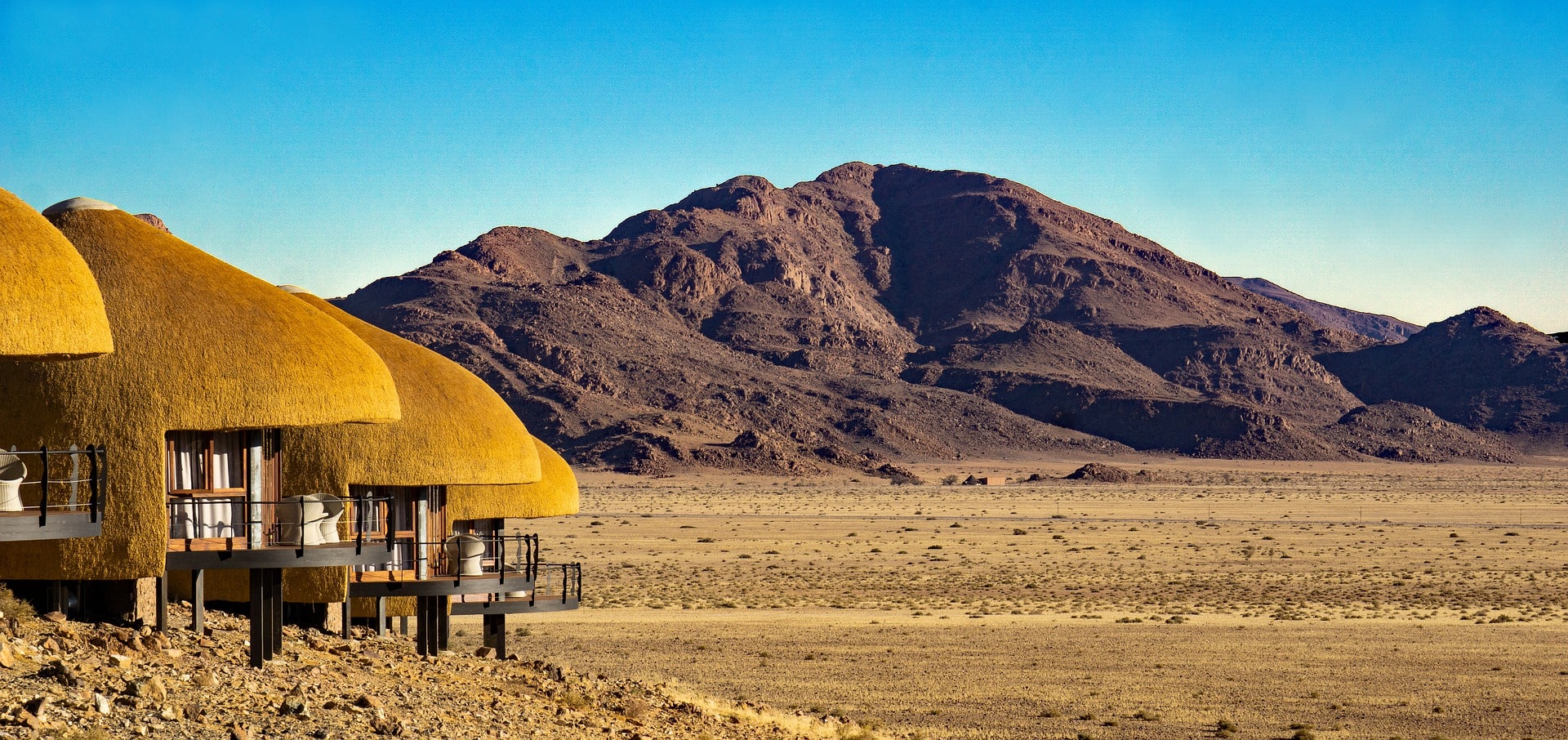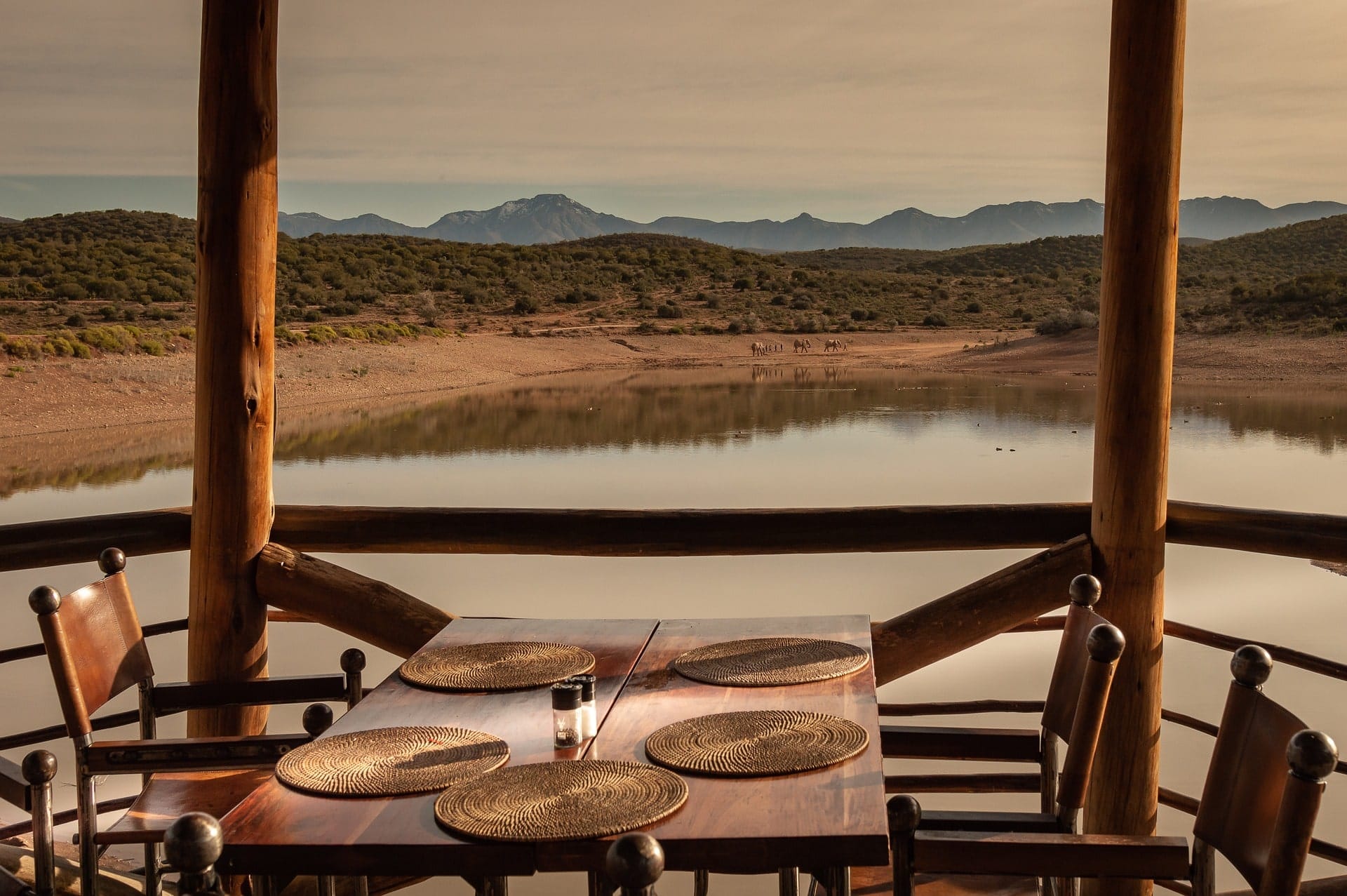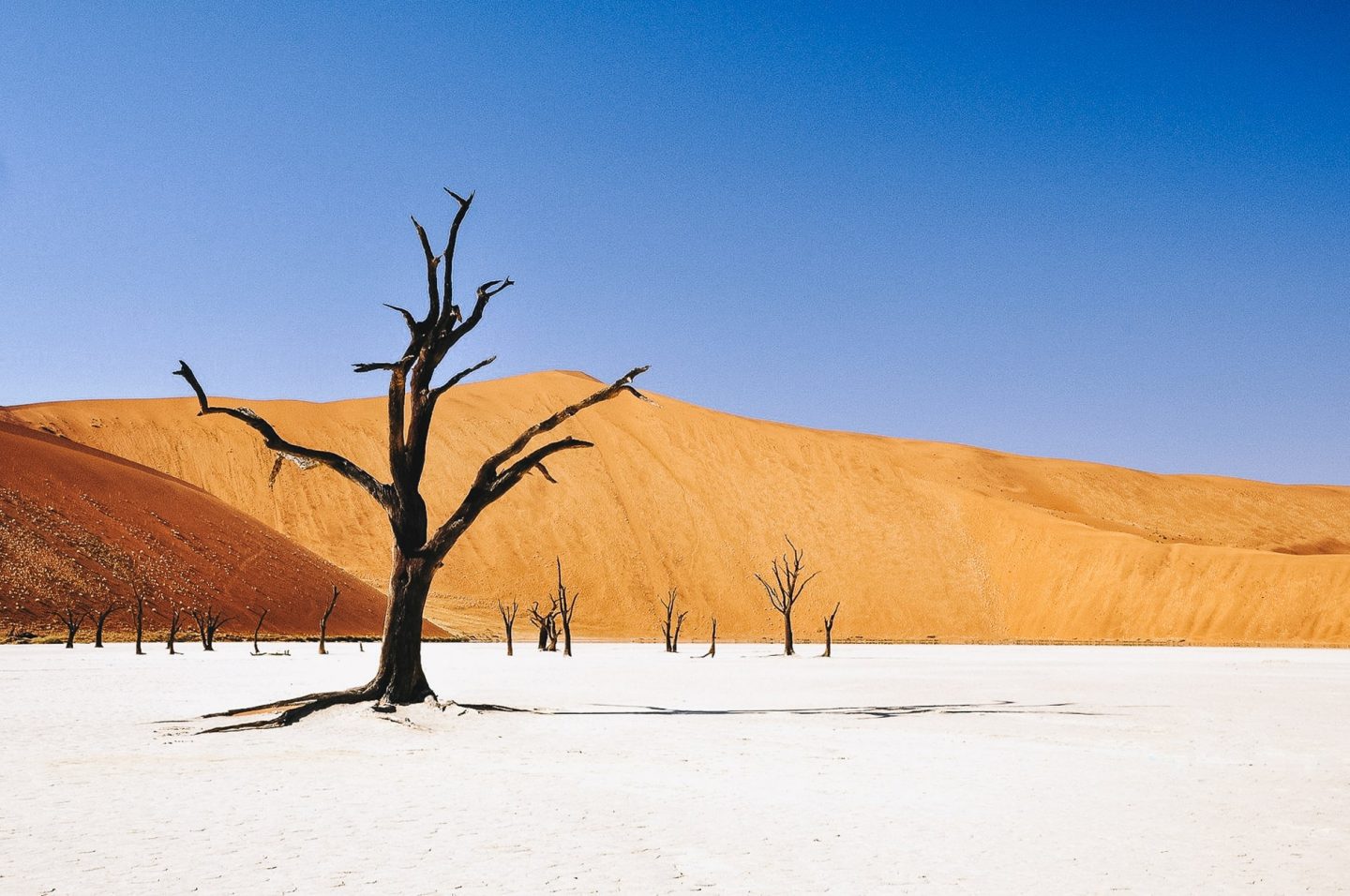
This is the second southern African country we’ve visited, and we’ve fallen in love with the destination. Discover 7 reasons why you should visit Namibia.
Namibia is one of the driest lands on the planet. With a surface area of 825,418 km2 and a population of just 2.2 million, you won’t see many people outside the capital.
If you’ve always wanted to set off into the heart of wild, authentic, animal-populated Africa, traversing landscapes of extraordinary beauty and variety, and still meeting ethnic groups today, then this destination is clearly made for you! It’s opening up more and more to tourism – let’s face it, we met a lot of Germans, Belgians and English, but very few French.
Namibia is a large country located in south-west Africa, below Angola. Little-known by the French a few years ago, it still attracts many travellers today! Namibia is a country where the sun shines 300 days a year, it’s an immense territory with a surface area a third larger than France, it’s a paradise for wild animals and home to the highest dunes in the world. Believe us, you won’t be disappointed during your stay in Namibia. A look back at this astonishing trip, one of our favorites.
I invite you to read our various articles to prepare your trip to Namibia:
- Where and how to see the Himbas
- The cheetah conservation center
- The practical guide to planning your trip to Namibia
- Our top 10 things to do in Namibia
WHAT ARE THE REASONS THAT MAKE YOU LOVE THE COUNTRY?
______________________________________________
TABLE OF CONTENTS :
1. WILDLIFE WATCHING
-
ETOSHA PARK
From the north to the south of the country, wildlife is very present. Many animals can be seen in Etosha, but also in Damaraland, Waterberg National Park and Palmwag Reserve. At Cape Cross, you’ll see a colony of sea lions, as well as a rich birdlife (waders and flamingos).
The famous Etosha Park covers 22,00 km2. This is one of the most beautiful wildlife reserves on the planet, where waterholes abound around the park! Located around 7 hours from Windhoek, we recommend stopping first at Otjiwarongo for get up close and personal with cheetahs. An intense moment for young and old alike.
Etosha Park’s Pan, an immense, virtually dry saline desert with no more than 20 cm of water when it rains, attracts an impressive number of animals, particularly during the dry season from may to october. You can see the famous Big Five (buffalo, elephant, lion, leopard and rhinoceros). Observation is easier here, as the grass is short and there are few waterholes, so wildlife is abundant: Felines, primates, ruminants, hoofed mammals such as mountain zebras, African elephants, hippopotamuses, giraffes and rhinoceroses, as well as carnivores, birds of prey and birds such as pelicans and lesser flamingos offer one of the most beautiful spectacles in Africa’s natural environment and populate the area around this shallow lagoon.
The Water Holes (waterholes), hidden in the bush (savannah translation) allow you to be on the lookout at sunrise and sunset to see lions, giraffes, antelopes called springbok and gemsbok, leopards if you’re lucky, cheetahs, the famous black rhinoceros, star of the park but also a species unfortunately threatened! We were fascinated by the curious approach of this one, very close I would say 10 meters from us! A word of advice: hold your breath, because the wait is well worth it!
We were there in February 2015 and conditions were pretty good. The weather was heavy, even very heavy, around 35-40 degrees, with a warm wind in the evening that doesn’t help you fall asleep! We were able to see almost all the animals, but we still had to look for them. And yes, these big beasts were well hidden behind trees or around rare waterholes.
The interior of this park of over 20,000 km2 is easily accessible with a vehicle, preferably a 4×4 to tackle the trails. In low season, I’ve seen very few open 4x4s using the safari trails (I’m talking about those with open sides that allow you to be elevated for better visibility). Within Etosha Park there are camping/toilet areas, closed at lunchtime to prevent animal attacks.
A safari is quite exhausting because you get up very early and spend a lot of time driving on tracks, waiting… My advice is to opt for a two-day safari – that’s more than enough time to be amazed and take some wonderful photos, unless you’re an avid photographer, in which case I can understand why you’d want to spend more time.
-
CAPE CROSS AND ITS OTARIES
Between the Namib and the ocean lies Cape Cross, famous for its colony of sea lions. And who hasn’t dreamed of getting up close and personal with sea lions once in their life? Well, we’ve seen not one, not ten, but 100,000 of them on the same beach at Cape Cross, on the west coast of the country! After driving for 2 hours on long, straight roads, you land on Namibia’s Atlantic coast. For a small entrance fee of around €5, you can admire this colony of sea lions relaxing on the sand or running slowly out to sea. We don’t come here for the stench, but for the spectacular scenery offered by these rather individual and aggressive mammals.
| Visit the sea lion video here and all our travel videos on our Youtube channel
-
WALVIS BAY
Walvis Bay, which means “Whale Bay” in Afrikaans is a port town on the coast of Namibia. Its coastal lagoon is home to numerous bird species, including pink flamingos and pelicans. It’s a magical place to go on a catamaran cruise to observe the marine wildlife: South African fur seals, dolphins and sometimes whales if you’re lucky come close around the Pelican Point lighthouse. All these species can also be observed from a kayak or canoe, to get even closer to nature. To the east of the bay, the coastal sand dunes mark the beginning of the Namib Desert.
Below are the activities we missed during our stay in Namibia, which we regret. From Walvis Bay, just 30 minutes from Swakopmund by 4×4, you’ll travel to Pelican Point, a lagoon full of wild animals. It’s aboard a kayak that you can spot if all conditions are right, fur seals, mola mola, leatherback turtles, Benguella or Heaviside dolphins, pink pelicans, pink flamingos and sometimes whales if you’re lucky! Allow a full morning and around 2 hours kayaking in this beautiful setting. A unique opportunity to meet these incredible animals. Remember to take a change of clothes with you, as some sea lions are very curious!
➡️ Check kayak availability and book here
If you’re less into kayaking, you can still take a catamaran trip for a morning to observe these animals.
➡️ Check catamaran availability and book here
-
OKONJIMA RESERVE
Okonjima is an animal reserve built on a former farm. This peaceful setting offers a variety of park excursions, with lodges ranging from standard to the most luxurious. The view from the rooms is astonishing, with large bay windows offering a panoramic view of the bush. If you’re lucky, you’ll be able to see the giraffes right in front of you!
Okonjima is a very high-end company, with an industrial decor and reclaimed materials, employing around 200 people and passionate people like Martin, our guide. There are 24 rooms, 8 bush camp chalets and 1 exceptional suite with private guide and chef. There’s also a 4-bedroom villa in the grounds, built out of sight. A villa that attracted Brad Pitt and Angelina Jolie. They spent a few days here with their children.
This is where the « Africat Foundation », a cheetah rehabilitation center and a 22,000-hectare wildlife park. The aim is to conserve and protect both cheetahs and leopards.. In Namibia, farmers tend to kill cheetahs to protect their herds. The center aims to encourage them to protect their livestock by installing fences around them, thus helping to save this endangered species. In this reserve, you can discover these big cats accompanied by a ranger guide, either by the day or over several days. The foundation also houses a clinic to care for injured animals until they grow up and are released back into the reserve. It also houses a 3-classroom school, financed by the Namibian government, to raise awareness among children and farmers alike of the need to protect these feline predators.
By coming to this park, you too can contribute to cheetah preservation. There’s also another center where you can watch cheetahs at close quarters, we tell you all about it in this article
2. THE DIFFERENT ETHICAL MINORITIES
Namibia is still a country where mass tourism is not yet present, and where customs and traditions have been preserved. The country is home to 8 different ethnic groups. The town of Opuwo, for example, is the starting point for meeting Himbas, Zimbas but also Hereros. Virtually all the country’s ethnic minorities rub shoulders here, easily recognizable by their outfits. The Bushman (San) people live in their villages in the Kalahari Desert or on the plains of Bushmanland. Gathering and hunting, the Bushmen have lived in the desert for thousands of years, adapting to this hostile environment.
The advantage of having a guide with you on your trip is that he can speak these different dialects. It allows you to interact with them and learn a little more about their way of life without having a horde of tourists around you. One of our fondest memories of the trip was our encounter with the Himbas. We just wanted a change of scenery and authenticity, and we weren’t disappointed! Discover our meeting with the Himbas
On these excursions, your experienced guides will organize the details of your encounter with the Himbas and explain the basic rules to be observed. They will also act as English/Herero interpreters. This first approach will enable you to discover their way of life, how they dress, wash and feed themselves.
3. VARIED LANDSCAPES
Namibia abounds with spectacular and surprising natural sites throughout the country, such as the Hantmann valley. When you rent a rugged 4×4 vehicle with a guide, you have the advantage of being able to discover incredible landscapes in a single day: dry rivers or muddy rivers in the middle of the rainy season, red sand deserts, arid granite mountains, but also lunar landscapes and wild animals such as giraffes and monkeys. You’ll soon understand why Namibia is the location for so many films and commercials. Backdrops that resemble the red rocks of Arizona, huge palm trees planted in the middle of sandy slopes that remind you of Morocco! We strongly advise you to take a local guide, as we didn’t see any signs on the trails, and it’s best to know the area well, as you can quickly get lost!
| North of the country
If you have a good guide, he’ll also take you to discover the deserted tracks of Kaokoveld, Himbas territory, devoid of roads but also the northernmost point of Damaraland with Sesfontein, Ruacana, Opuwo and Epupa Falls near Kukene river, reaching 37 meters in height. Our guide took us to the hilltop viewpoint, accessible on foot or by 4×4, a peaceful spot perfect for an aperitif and a sunset view of the falls.
→ From Etosha, allow 4h drive to see Epupa Falls and entrance fee $20 namib/p
| Atlantic Coast
- Sandwich Harbour, an incredible natural site not far from Swakopmund, to be discovered by specific 4×4, where sand dunes plunge into the Atlantic Ocean. This place can be flown over in a small 2-seater plane, and I’m told it’s unforgettable to fly over the dunes and see the contrasting relief of this immense bay.
- Damaraland: Damaraland is home to the Brandberg, a mountain of pink granite and Twyfelfontein, one of the largest rock art sites I’ve ever visited, dating back over 6,000 years. The animal engravings were made by hunters from the San tribe, and provide a better understanding of how our ancestors lived when they were moving through the African savannahs. This is also the starting point for the « Burnt Mountain », « Organ Pipes », small gorge with 4-5m high dolerite columns and the « Petrified Forest », A vast expanse where we were able to see conifer fossils, more precisely petrified tree trunks, some over 30 meters long. The site is classified as a national monument, and it is strictly forbidden to pick up even the smallest piece of wood from the ground, on pain of a hefty fine. More than 10 hours on the trail, jumping in all directions, stopping at every viewpoint – what magical, unforgettable memories!
| The South of the Country
- The Namib Desert, the oldest desert in the world, located in the Sossusvlei region in the heart of the Namib-Naukluft National Park, is a place of unique beauty, renowned for its immense red and golden dunes, including Dune 45 and Big Daddy, which rise to over 300 meters above sea level. You’ll visit this site at dawn, very early in the evening. Sunrise over the dunes was a magical moment of the trip. Beware: in the middle of the day, temperatures are extremely hot. From the top of the dunes, the panorama is breathtaking, you’ll see the Deadvlei, that white salt desert with its sun-scorched acacia trees. Running down the dunes is also a great moment. To round off the show in style, a a hot-air balloon flight over these landscapes is a must on this trip. We’ll tell you more below.
-
Namibia has some very unique spots for great hiking. I propose a day or 2-day hike in Spitzkoppe. Located in the Namib Desert, the Spitzkoppe are a group of bald granite peaks forming one of Namibia’s most recognizable and spectacular monuments. These huge, imposing domes are a paradise for hikers and mountaineers, whether beginners or experienced, who want to climb challenging slopes.
➡️ Check here availability for 1 day and book
- The Fish River Canyon reputed to be the second largest Canyon in the world after the Grand Canyon in the USA. If you like hiking and safaris, this 3-day extension in southern Namibia is for you in this magnificent place. It’s a place like no other you’ll find in Africa, the second largest canyon in the world after the one in the USA. You’ll explore the Fish River Canyon and discover the best sites to visit.
4. ABANDONED PLACES LIKE NO OTHER
-
SAND HOUSE
Namibia is also home to such unlikely places as the famous Sand House at Kolmanskop, in the Namib Desert (in the south-east of the country). This former mining town was renowned for its diamond mining. After the 1st World War, diamond prices plummeted and the town was gradually abandoned. The sand took its place and buried a large part of the town and the interiors of the houses. The atmosphere is both strange and unique, making it a must for photo enthusiasts.
-
SOLITAIRE
Solitaire, an improbable, mysterious and unique place locatedbetween Swakopmund and Sesriem in Namibia. This place is nicknamed the “Bagdad coffee from Namibia” and it looks so good on her! We come here for two reasons:
- the 60’s gas station with rusty carcasses scattered here and there in the sand
- the gourmet bakery that sells apple strudel, which is actually quite good, and is renowned for serving good pastries to foreigners in particular, but also to Brad Pitt and Angelina Jolie!
Solitaire has all the makings of a ghost village, and its unusual facilities make it a unique and unmissable destination for travelers on a Namibian road trip. Don’t forget to stop 40 kilometers north of Solitaire, on the C14. You’ll come across the sign indicating that you’re passing over the Tropic of Capricorn – always a great moment to photograph!
Solitaire is easily accessible, as this tiny town is on the road to the Namib Desert. We did stop here for a short break, but you can also stay at two charming Lodges nearby:
5. ORIGINAL SAND DUNES
-
SWAKOPMUND AND SURFING IN THE SAND DUNES
The city of Swakopmund located 1h30 from Cape Cross, is charming with its traditional German architectural style. In February, we didn’t see many travelers, and at times we thought we were in a ghost town! We particularly enjoyed wandering around the city’s colorful townships and stopping for lunch at the small local market on the corner to eat beef prepared on the hoof, accompanied by a bun that tasted like a sweet doughnut.
Swakopmund is best known for the extreme sports available just 20 minutes from the city: parachute jumping and sandboarding, i.e. surfing down the slope of a dune! We didn’t come to Swaokopmund to swim in 14-degree water, but to ride the 120-meter-high sand dunes, surfing and windsurfing. Half a day of riding down sandy slopes without the need for a ski lift.
You can choose the« Stand Up » i.e. standing on the board or the option « Lie down boarding » namely lying on a wooden plank. It’s a great feeling, going downhill at 72 km/h over the sand.
→ Please note that only people with a certain level of physical fitness will be able to climb the dune on foot. The climb is really tough, while the descent is very fast.
-
SOSSUVLEI AND DEADVLEI
Sossusvlei is one of the most beautiful stops on this trip. This sumptuous natural site located in the Namib Desert in the Namib Naukluf is surely the country’s most photographed. It’s world-famous for its 300-metre-high orange-red sand dunes (the highest in the world, by the way) and its geometrically perfect dry soil, with its many lozenges of unbleached salt. This is one of one of the most spectacular places in Southern Africa.
When we think of sand dunes, we of course think of Namibia’s most famous, the majestic Dune 45 located in Sesriem. Whether it’s sunrise or sunset, you’ll never have the same light, the same colors, the same photos!
Elim Dune is the first dune you see when you enter the Park. It offers Sesriem campers a magnificent view of the sunrise at 7.45 am. Don’t forget to get there as soon as the park gates open, as the view from the top is well worth the effort! Climbing fast over sand dunes at 6am isn’t always easy! Indeed, we walked along a very narrow ridge line for the sunrise and I really thought I was going to give up along the way! But once at the top, you’ll discover an incredible 360-degree view of this salt plain. It’s just unforgettable. The natural orange-red of these pyramids contrasts with the blue of the sky, making for an unlikely setting!
The named dune Big Daddy overlooks Dead Vlei. The DeadVlei, which means “dead marsh”, is located at the foot of this dune. It’s a pristine salar, an immense desert of salt, clay and dead trees dried out over the centuries. It’s easy to reach the top of this dune and then run down it, sliding like a toboggan, to land in the magnificent Dead Vlei.
| Informations
→ Remember to sleep in the Sesriem Campsite to benefit from all these advantages, including proximity. Allow 1 hour’s drive from the entrance to reach Dune 45.
→ It’s best to get there early in the morning or late afternoon to enjoy the colors and avoid the midday heat.
→ Allow 4/5h drive from Windhoek to get to the site and 3h drive from Swakopmund.
→ On your way to Dune 45, there’s also Sesriem Canyon, which is well worth the detour!
→ But why Dune 45 ? simply because it’s 45 km from Sesriem towards Sossusvlei, a good 30 minutes’ drive.
-
SANDWICH HARBOR
Sandwich Harbor is an unusual name for this out-of-the-ordinary destination, an exceptional place on the edge of the desert.
Sandwich Harbour is a unique landscape bordered by the Atlantic Ocean to the west and Namib-Naukluft Park to the east. It’s renowned in particular for its giant ivory dunes that flow into the Ocean. These places declared UNESCO World Heritage Site can only be visited with a professional guide driving a 4×4. Your rented 4×4 vehicles won’t do and are strictly forbidden. Some excursions offer an unexpected and unusual service: a meal in the heart of the dunes with champagne and oysters. A unique experience!
An activity not to be missed in Namibia.
➡️ Check availability and book here
6. A MONTGOLFIÈRE FLIGHT IN THE SESRIEM DESERT
Looking for adrenalin and excitement? If there’s one activity that left no one indifferent during our stay in Namibia, it was hot-air ballooning in the Sesriem desert, above the Namib dunes! There are a few places in the world where you can fly over magical landscapes, and Namibia is one of the must-sees at least once in your life!
Find out more about this magnificent outing
The robbery takes place at dawn. The agency picks you up by minibus at your accommodation around Sesriem then you drive about 20 minutes before arriving at the rendezvous point. Hot-air balloons inflate fairly quickly and then take off! Only the wind determines your flight speed once you’re in the air. The scenery is splendid, a mix of red sand dunes and majestic mountains. The balloon skims the ground regularly to get close to the few animals galloping through the bush, then gently heads back up into the sky. It’s truly magical and so peaceful to contemplate these stretches of desert and the different lights.
Once on the ground, the experience continues. A hearty breakfast awaited us, laid out in the middle of the savannah! No one around us, just two tables and a variety of dishes ranging from yogurt, cereals, fruit platters, plates of cold meats with zebra (I didn’t taste that, sorry!), eggs, salads and so on. The icing on the cake comes when your hot-air balloon driver pours you as much champagne as you like. A luxurious pleasure that is ultimately priceless!
→ The flight isn’t cheap, but if you’ve got a little present for your sweetheart or a marriage proposal, now’s the time!
→ Tour duration: approx. 1h
| Visit the video of the hot-air balloon flight here and all our travel videos on our Youtube channel
7. UNIQUE AND INCREDIBLE ACCOMMODATIONS
Campsites, tents on the roof of your 4×4, lodges, guesthouses – there’s something for everyone when it comes to discovering Namibia. But if you want to really get away from it all and stay in dream locations, there are a variety of unique and intimate small and medium-sized accommodations in the country. Namibia is home to secret addresses in the heart of the bush, a paradise for lovers of wide open spaces and nature.
Lodges in Namibia are perfectly integrated into the natural environment and are often very luxurious. But the best part is being able to spend the night in this unspoilt natural setting!
We were lucky enough to visit some of these luxurious Lodges, such as the Lodge Okonjima Luxury Bush camp or the Lodge Okonjima Plains Camp located in Otjiwarongo, about a 3-hour drive north of Windhoek and 45 minutes fromOtjiwarongo
Okonjima is an animal reserve built on a former farm. This peaceful setting offers a variety of park excursions, with lodges ranging from standard to the most luxurious. The view from the rooms is astonishing, with large bay windows offering a panoramic view of the bush. If you’re lucky, you’ll be able to see the giraffes right in front of you!
Our top picks for luxury Lodges include:
- Mowani Mountain Camp
- The ecological Grootberg Lodge
- Rostock Ritz Desert Lodge
- Hoodia desert Lodge
- Wolvedans Dune Lodge
- We Kebi Safari Lodge
- The Fish River Lodge
- Omaanda from the Zannier hotel group
- Hotel Sonop by the zannier group
| COUP DE CŒUR 🖤
➡️ Envie de dormir à la belle étoile, réservez le Namib Dune Star Camp. Sensations et dépaysement assurés! Le lit est installé sur la terrasse, vous serez seuls au monde pour vivre cette expérience 100% romantique et observer le ciel étoilé.
➡️ Envie de dormir dans une cabane en plein bush, réservez le kuangukuangu du côté de Solitaire.
THE POSITIVES AND NEGATIVES OF NAMIBIA
_____________________________________________
| POSITIVE POINTS
- Varied landscapes and unique dunes
- A highly protected and preserved flora and fauna
- High-quality infrastructure, especially the Lodges
- The last black rhinos are in Namibia
- A country with few tourists, so no mass tourism
| NEGATIVE POINTS
- Over the years, Namibia has become a rather expensive country in terms of accommodation, and not necessarily accessible to all travelers. You can either sleep in campsites that aren’t always well-equipped and clean, or opt for comfortable, even luxurious, but much more expensive lodges. Namibia now wants to position itself in a luxury niche like its neighbor Botswana.
- Namibia is an increasingly popular destination, so it’s essential to plan your trip a few months before you leave. Accommodation must be booked in advance, as demand is high.
- Prices have more than doubled in just a few years, and today you can expect to pay at least €3,000/p (sometimes excluding flights) for a 13 to 15-day trip to Namibia.
- For the northern part of the country, a guide is preferable if you want to visit this area without being surrounded by travellers and take paths off the beaten track.
- The road network is very poorly developed in terms of local transport and to be honest, I haven’t seen a single bus with backpackers or locals on it. Tours are often organized from Windoeck, the capital, or Cape Town. Here, we travel by 4×4 or car.
- For internet addicts who can’t do without social networking, wifi here is rare and very slow if there is any!
This trip to Namibia is one of our finest. If you like wide-open spaces, adventure, nature, wildlife, driving hundreds of kilometers every day (because the country is so vast), a change of scenery and a breathtaking view, then this is the country for you. It’s a country that has to be earned for its sometimes complicated roads, but it’s a roadtrip to be enjoyed by two or your family at least once in your life. Because of its size and the diversity of its landscapes, I strongly recommend staying at least 15 days.
Namibia is also about unforgettable sunrises and sunsets, splendid lodges, unique and intense colors, and the feeling of being truly alone in the world. It’s romantic and adventurous at the same time, a journey that stirs emotions all the way and won’t leave you indifferent.
Please note that as an accredited bespoke tour creator, I offer to help you create your tailor-made trip to Namibia and create a personalized itinerary to suit your needs. Please send me an email at : contact@mademoiselle-voyage.fr
Before you leave, I invite you to read our various articles to prepare your trip to Namibia:
- Where and how to see the Himbas
- The cheetah conservation center
- The practical guide to planning your trip to Namibia
- Our top 10 things to do in Namibia
